-
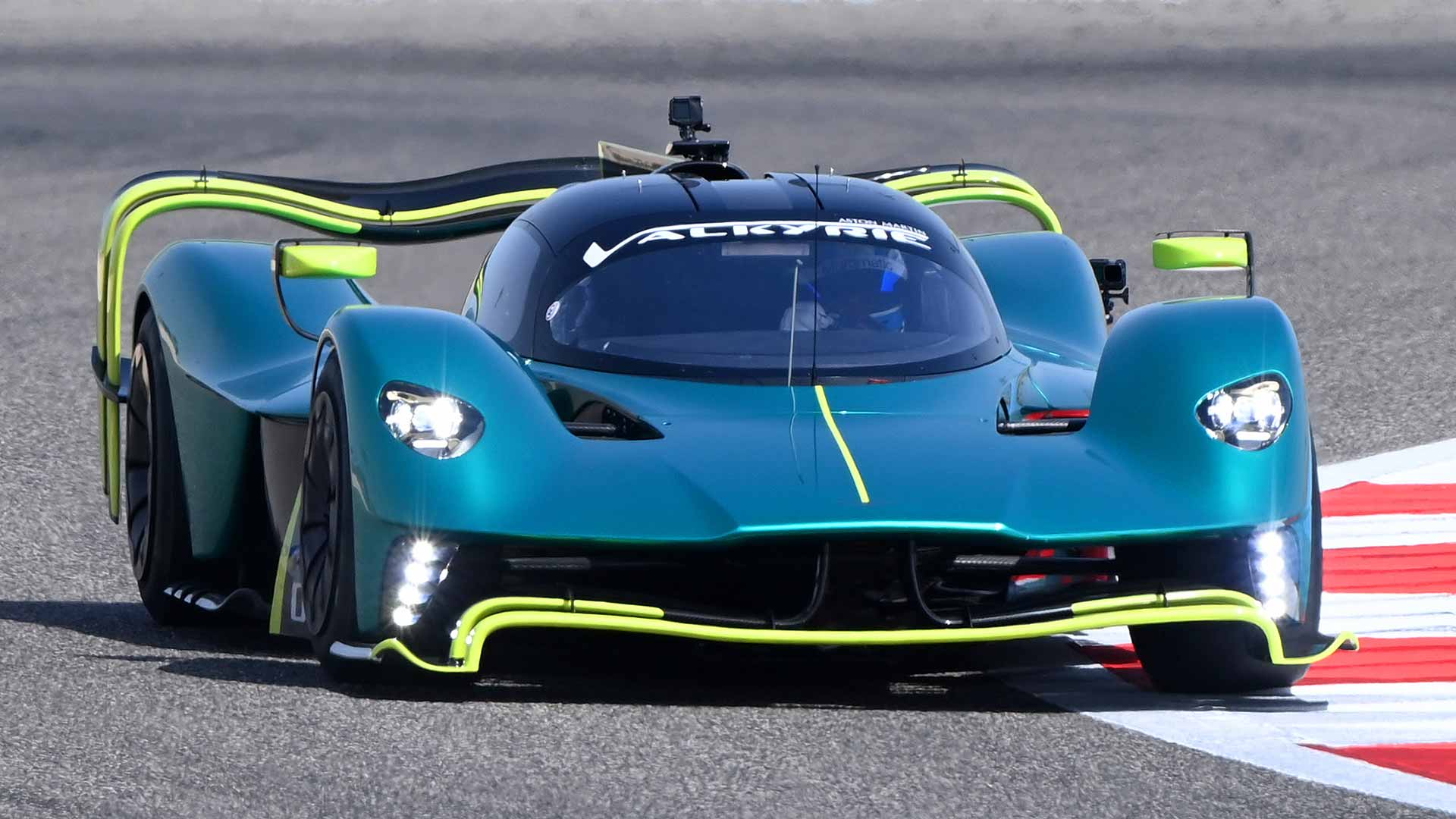
From the race track to the road
© Aston MartinThe Aston Martin Valkyrie has finally been released, after years in development. The brainchild of F1 legend Adrian Newey, Already set to be a pinnacle of petrol-powered supercars, the £2.5m machine boasts almost 1,200hp and, remarkably, is road-legal – although you’ll need a racetrack to get anywhere near exploiting its full potential.
It’s just the latest example of how F1 can help develop extraordinary road cars. The transfer of technology from Formula 1 has helped create some of the most extreme road cars ever made, and helped car manufacturers to promote them.
As a guide to what we might expect from Ford in the future, let’s look at some of the greatest road cars inspired by Formula 1. -
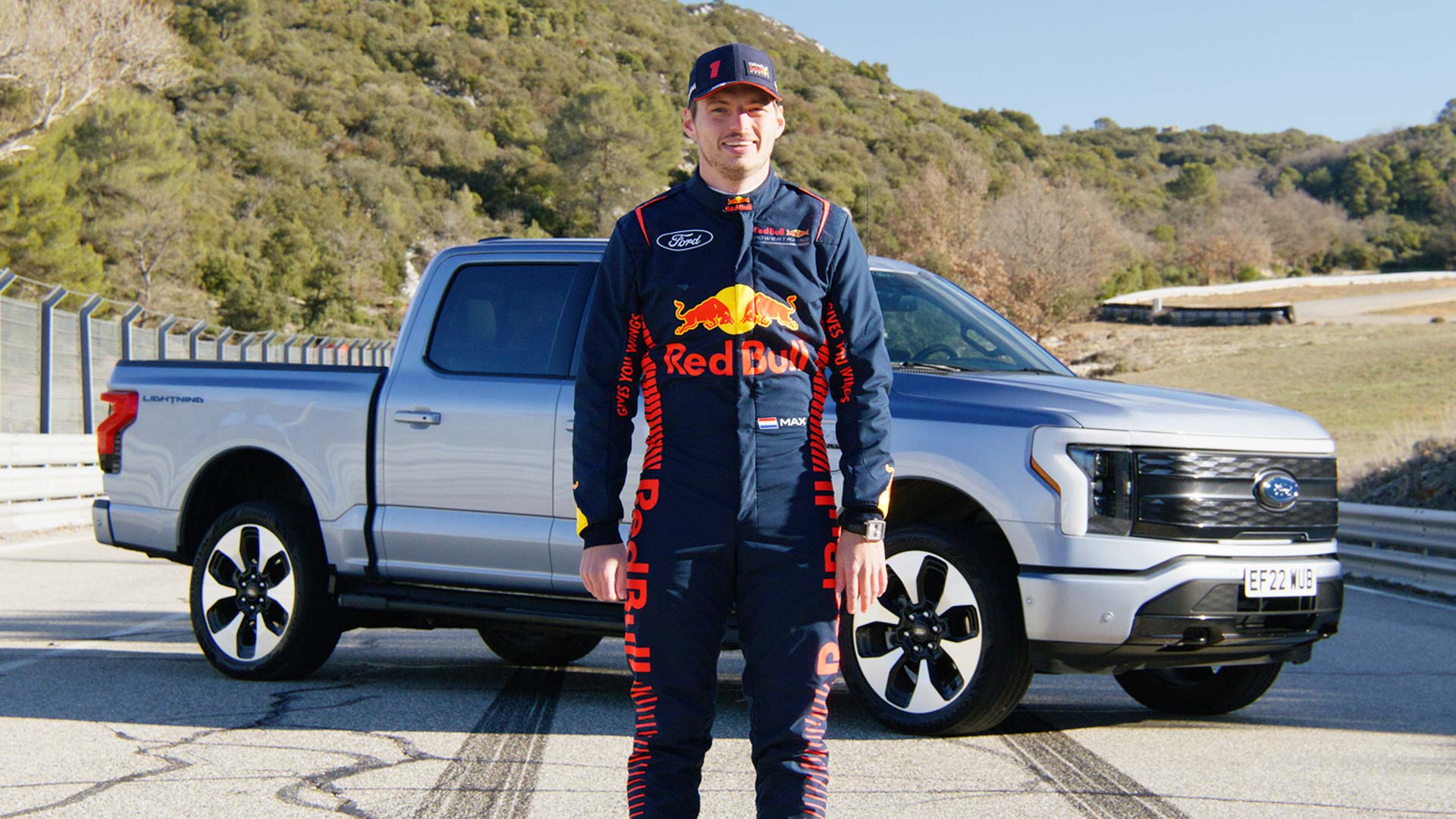
The blue oval returns… again
© FordFord is a more mundane road car form that recently stole the headlines: it made a surprise announcement it is returning to Formula 1, after more than two decades away from the sport. A new partnership will see Ford supply power units for both the Oracle Red Bull Racing and Scuderia AlphaTauri teams from 2026.
Given how all-conquering the Red Bull team currently is, Ford will have its work cut out…
-
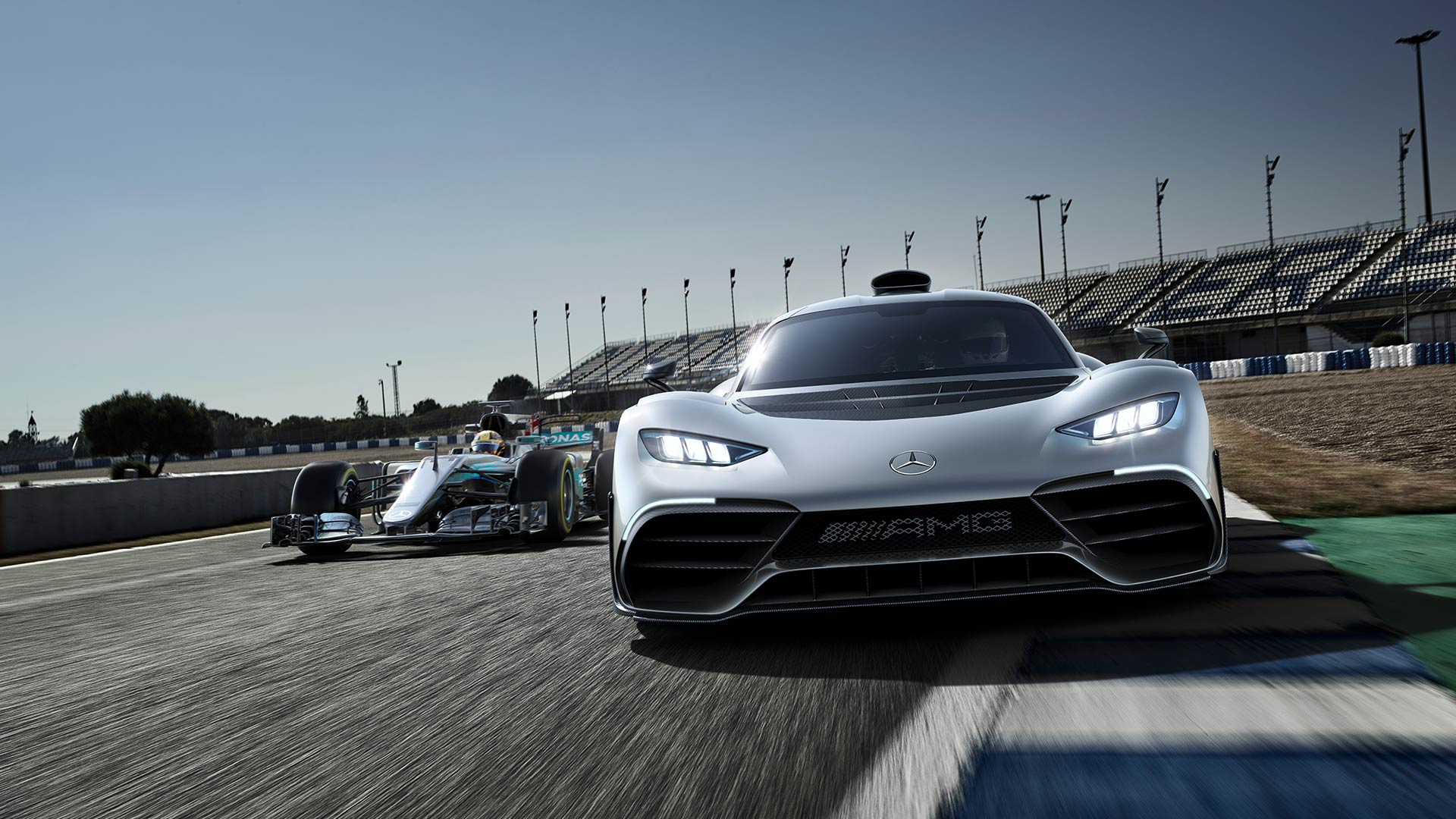
2020 Mercedes-AMG One
© Mercedes-BenzMercedes-AMG has transformed several years of on-track success into a road car like no other. Known simply as the ‘One’, this hypercar is powered by the same 1.6-litre turbocharged V6 engine used in the F1 race cars.
With more than 1,000 hp, and an eight-speed paddle shift gearbox, the One is an extremely direct demonstration of motorsport technology for the road. -
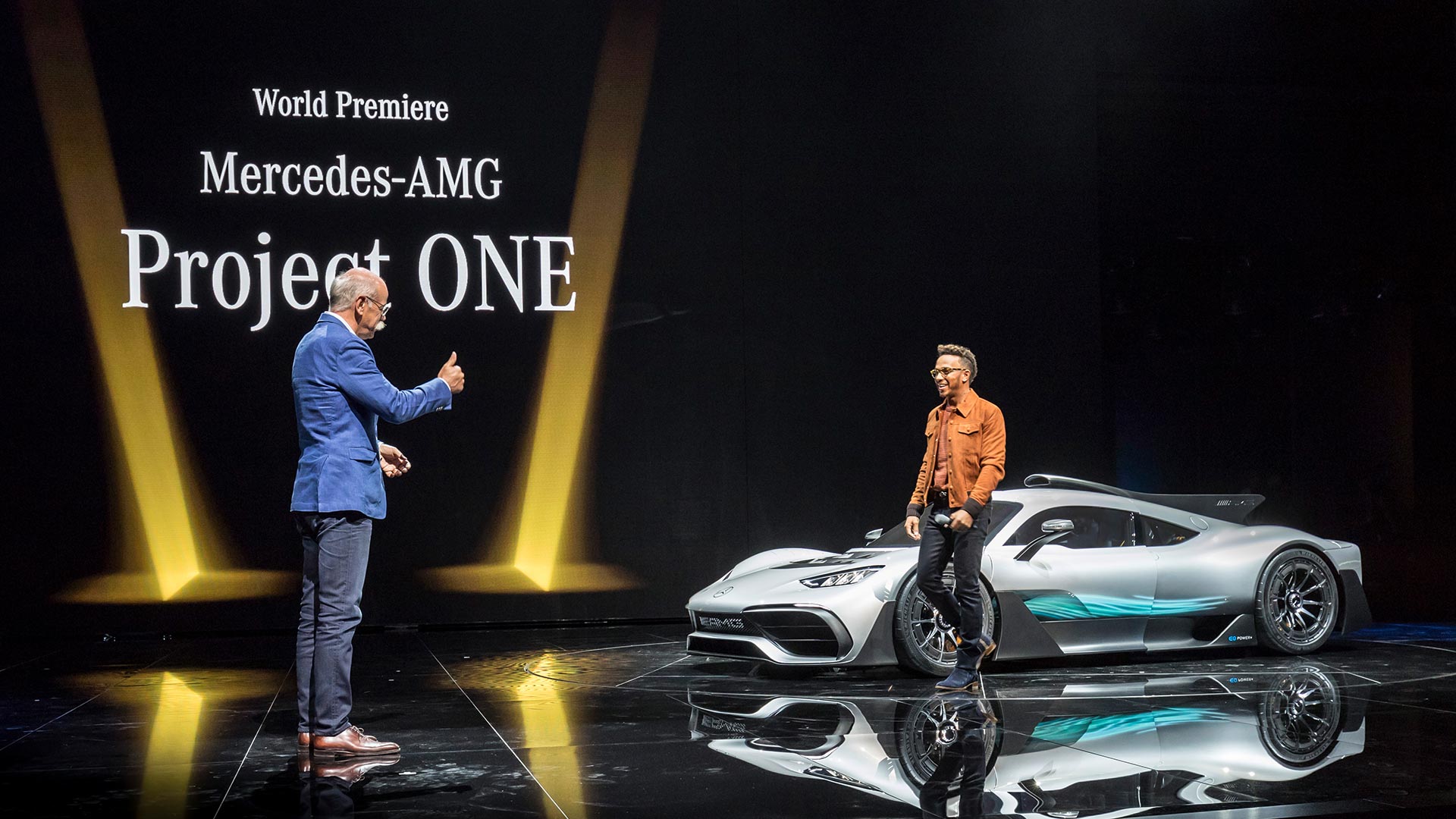
Lewis Hamilton reveals the Mercedes-AMG One
© Mercedes-BenzMercedes-AMG star driver Lewis Hamilton was on hand to help reveal the One, driving it on to the stage at the 2017 Geneva Motor Show. A combination of four electric motors, along with the turbocharged V6 engine, allows the One to travel up to 15 miles on battery power alone.
Hamilton has been involved in the car’s development, meaning those who buy one of the 275 production versions will know its abilities have been tested by a multiple F1 World Champion. Hamilton’s former team mate, Valtteri Bottas, has also spent time with the 217 mph One.
-
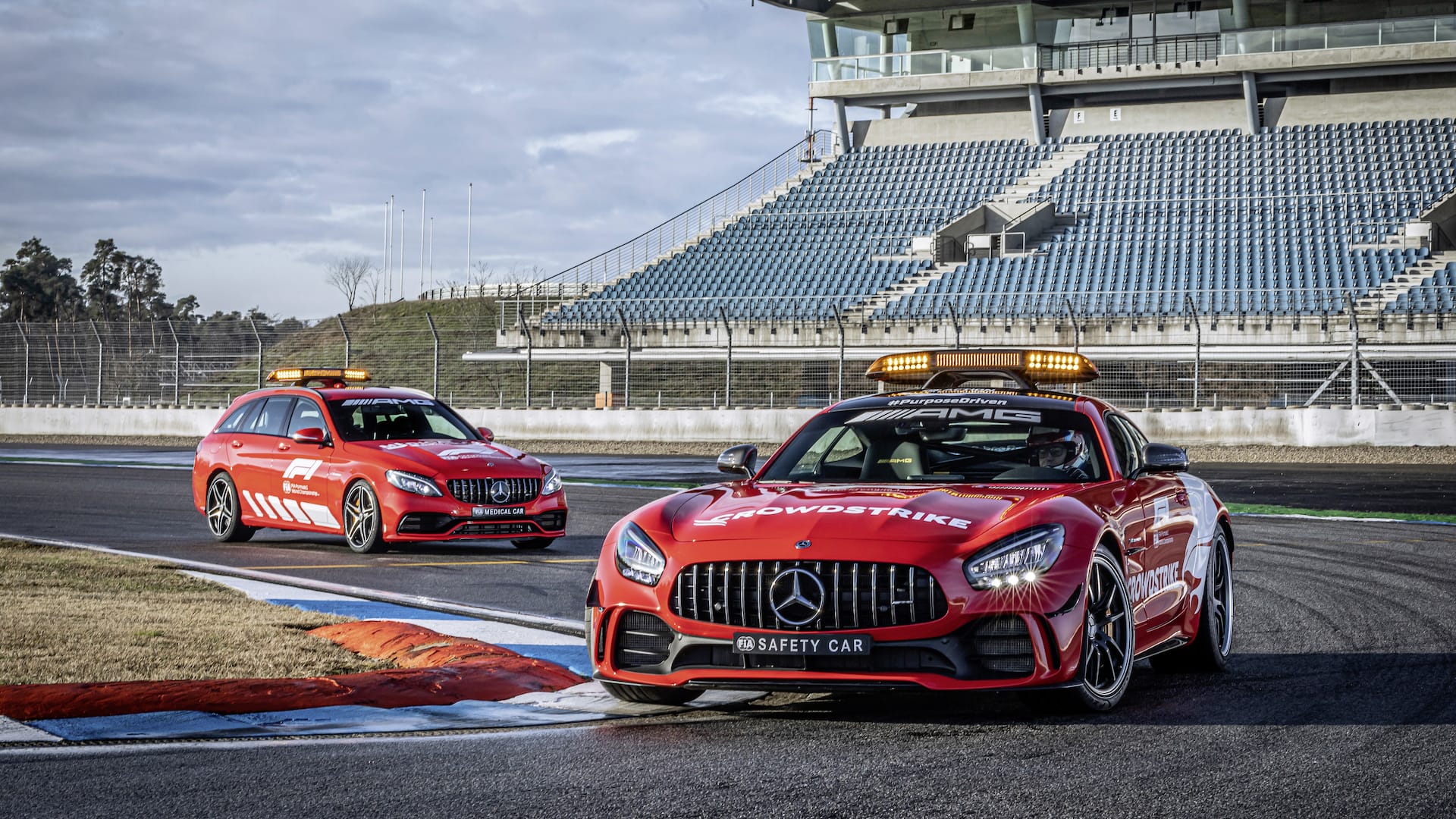
An almost guaranteed Mercedes-Benz leader on track
© Mercedes-BenzMercedes-Benz entered into an agreement with Formula 1, agreeing to provide the safety car for the championship from the 1996 season onwards. This includes cars used by the medical teams and doctors, along with other official vehicles.
It means that in the event of a race being neutralised due to bad weather or an accident, millions of F1 fans around the world will see a Mercedes leading the field. Various road-going Mercedes models have been used, with the 577 hp AMG GT R currently responsible for safety car duty.
A Mercedes-AMG C 63 S also acts as the official F1 medical car, providing a rapid response to major incidents.
-
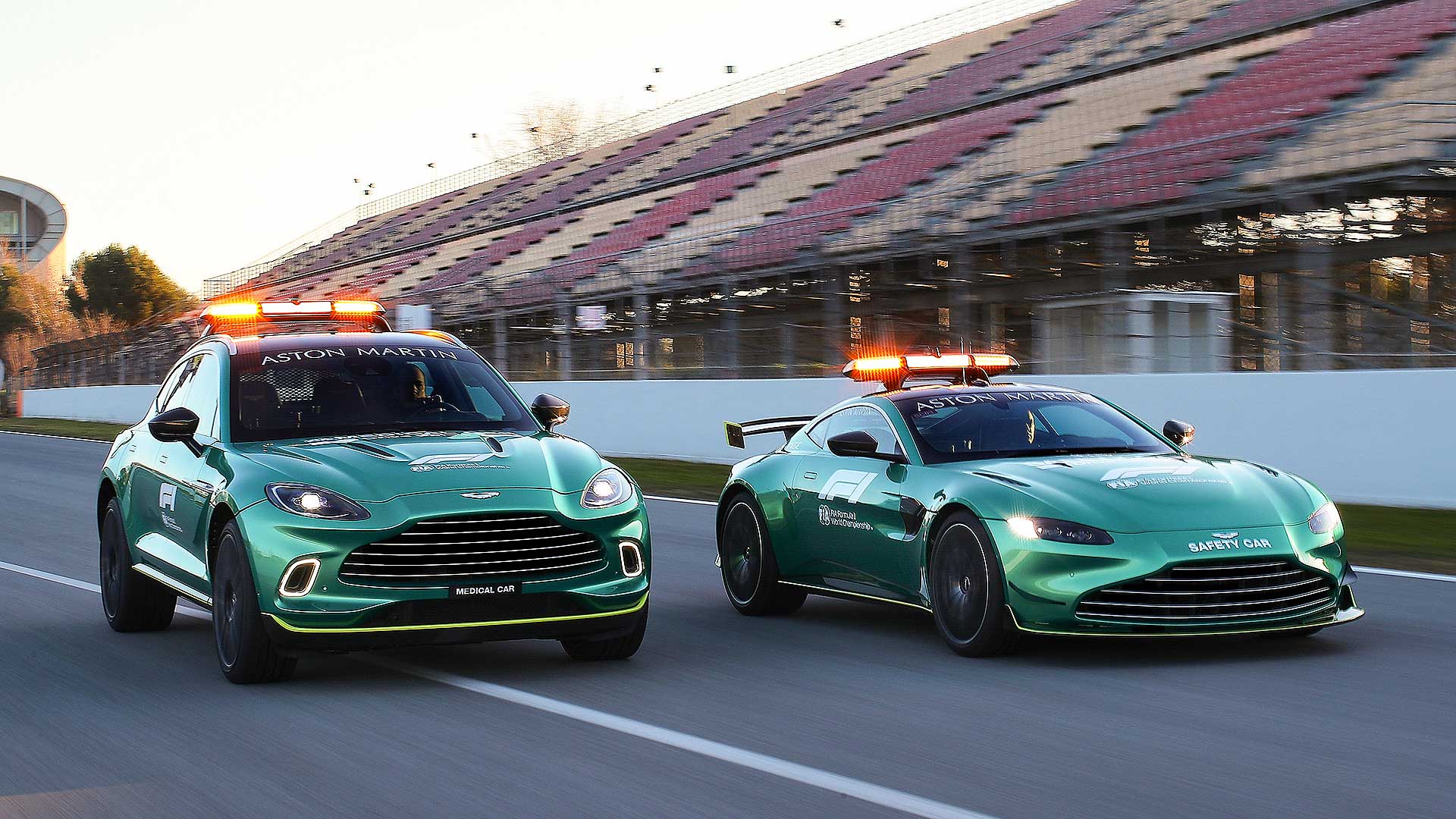
Aston Martin shares safety car duties
© Aston MartinAfter the return of Aston Martin to Formula 1 in 2021, the company also provides the official F1 safety and medical cars.
The Aston Martin Vantage F1 Edition coupe was chosen as the safety car, alternating with the Mercedes-AMG GT R. With more than 500 hp from its twin-turbocharged 4.0-litre V8, it certainly has the pace for the role.
Working alongside the Vantage is Aston Martin’s first SUV, the impressive DBX. It’s the official medical car, with a 181mph top speed ensuring there should be no delays when help is needed.
-
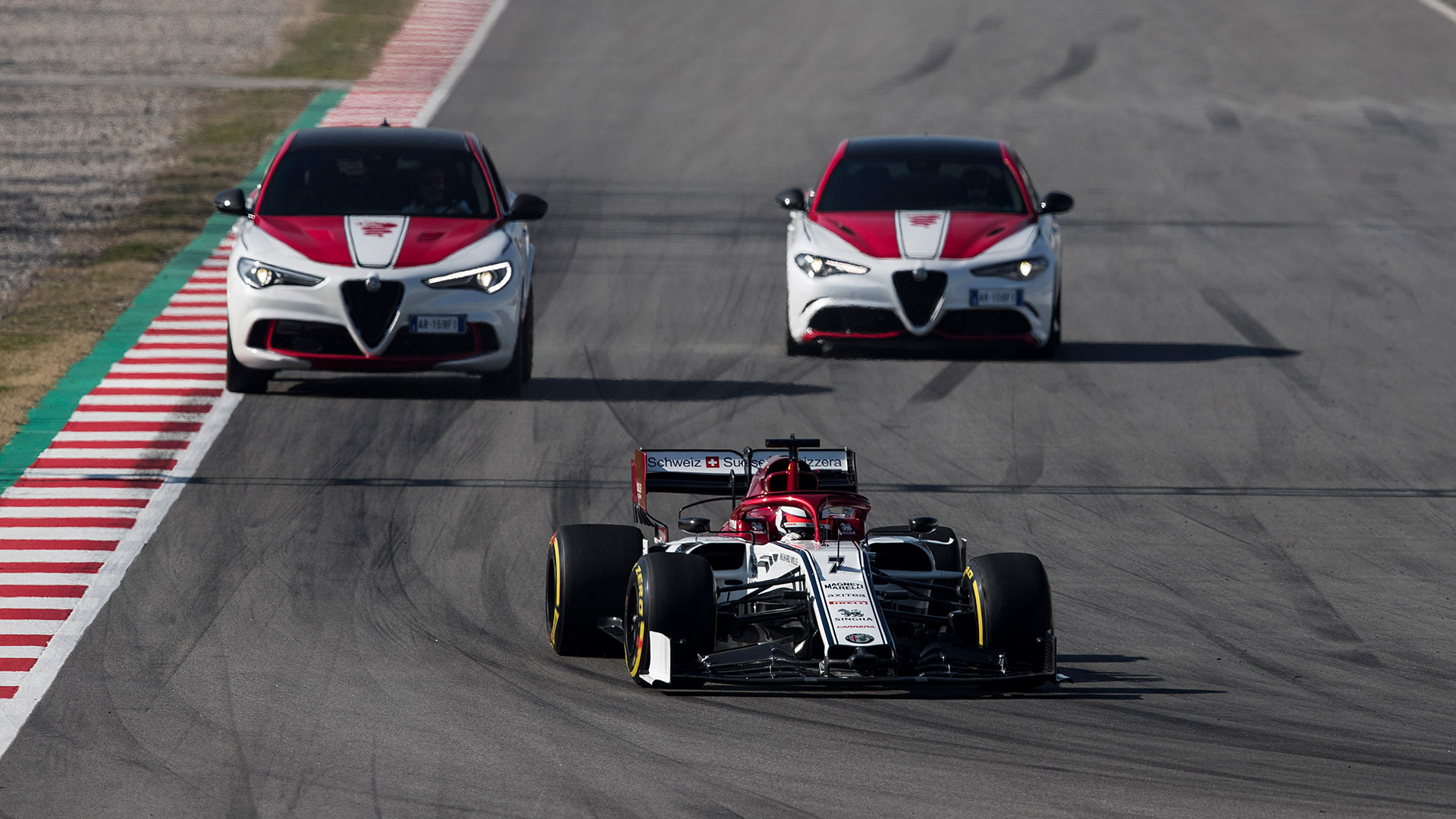
Alfa Romeo celebrates a return to Formula 1
© Alfa RomeoItalian company Alfa Romeo can trace the roots of its motorsport activity as far back as 1911, and it became active in Formula 1 from the outset. This included seeing its driver, Giuseppe Farina, win the inaugural FIA World Championship of Drivers in 1950.
Alfa withdrew as a factory team in 1951, but continued to supply engines to F1 until 1985. For the 2018 season, Alfa Romeo entered into a partnership with the Swiss Sauber team. Heading into 2019, this resulted in the outfit being renamed Alfa Romeo Racing.
-
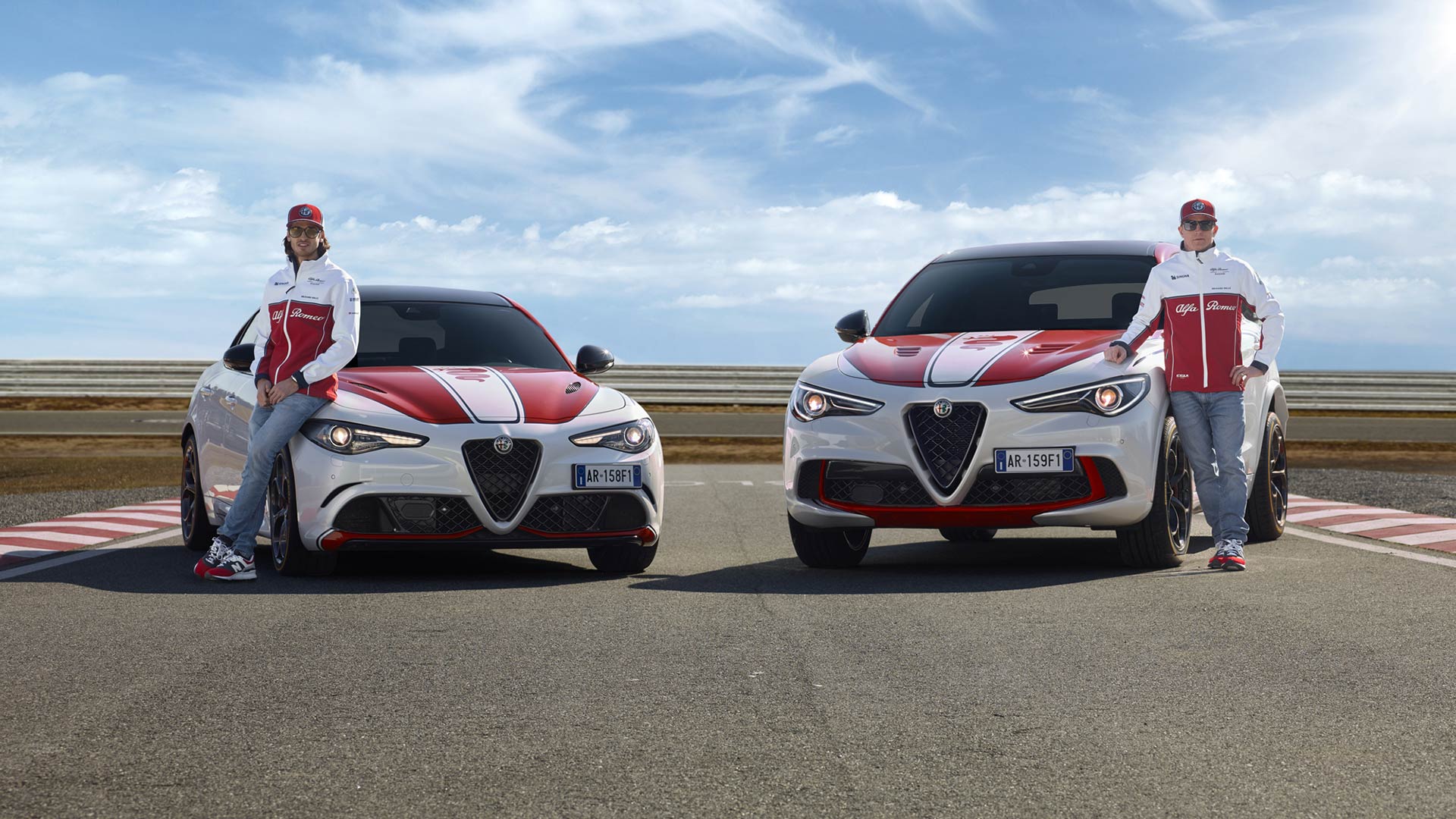
2019 Quadrifoglio Alfa Romeo Racing Special Editions
© Alfa RomeoAlfa has been keen to use its reborn Formula 1 project to help market its range of road cars. This includes ‘Alfa Romeo Racing’ versions of the Giulia Quadrifoglio sedan, and Stelvio Quadrifoglio SUV, wearing liveries inspired by the F1 racing cars.
Both Giulia and Stelvio use a 2.9-litre turbocharged V6 engine producing 513 hp, and are fitted with an Akrapovic titanium exhaust system. Current Alfa Romeo Racing drivers Kimi Räikkönen and Antonio Giovinazzi were drafted in to help show off the new cars.
-
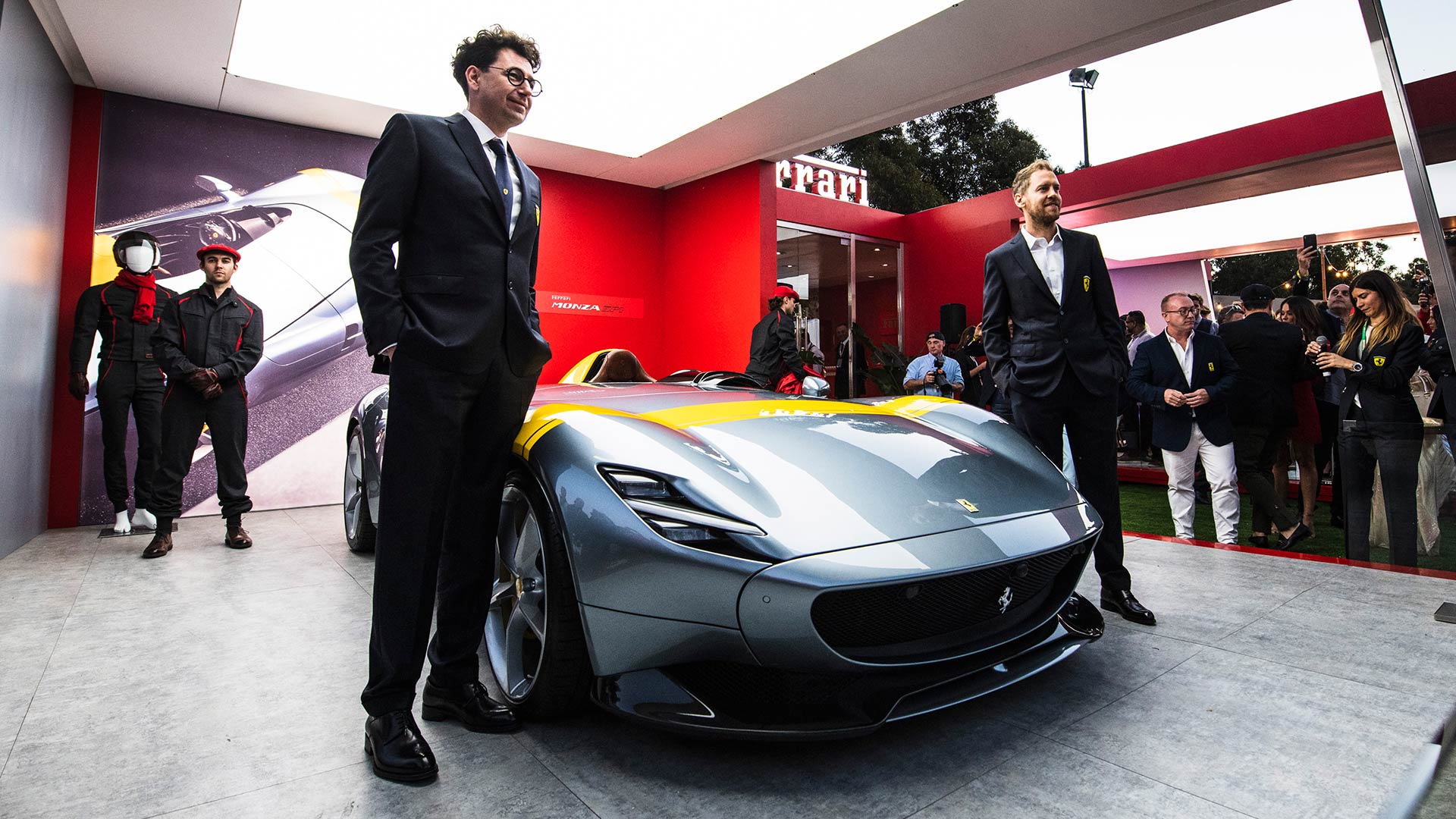
2019 Ferrari Monza SP1
© FerrariEnzo Ferrari was famous for initially having no interest in producing road cars, with his thoughts focussed solely on motorsport. However, after World War Two, Ferrari began to produce cars for the street in order to fund his racing team.
Having competed in every season of Formula 1 since 1950, Ferrari is now intrinsically linked with the category. Such a close association means Scuderia Ferrari members are frequently involved with road cars. Here, team principal Mario Binotto and driver Sebastian Vettel are seen with the limited-edition Monza SP1.
-
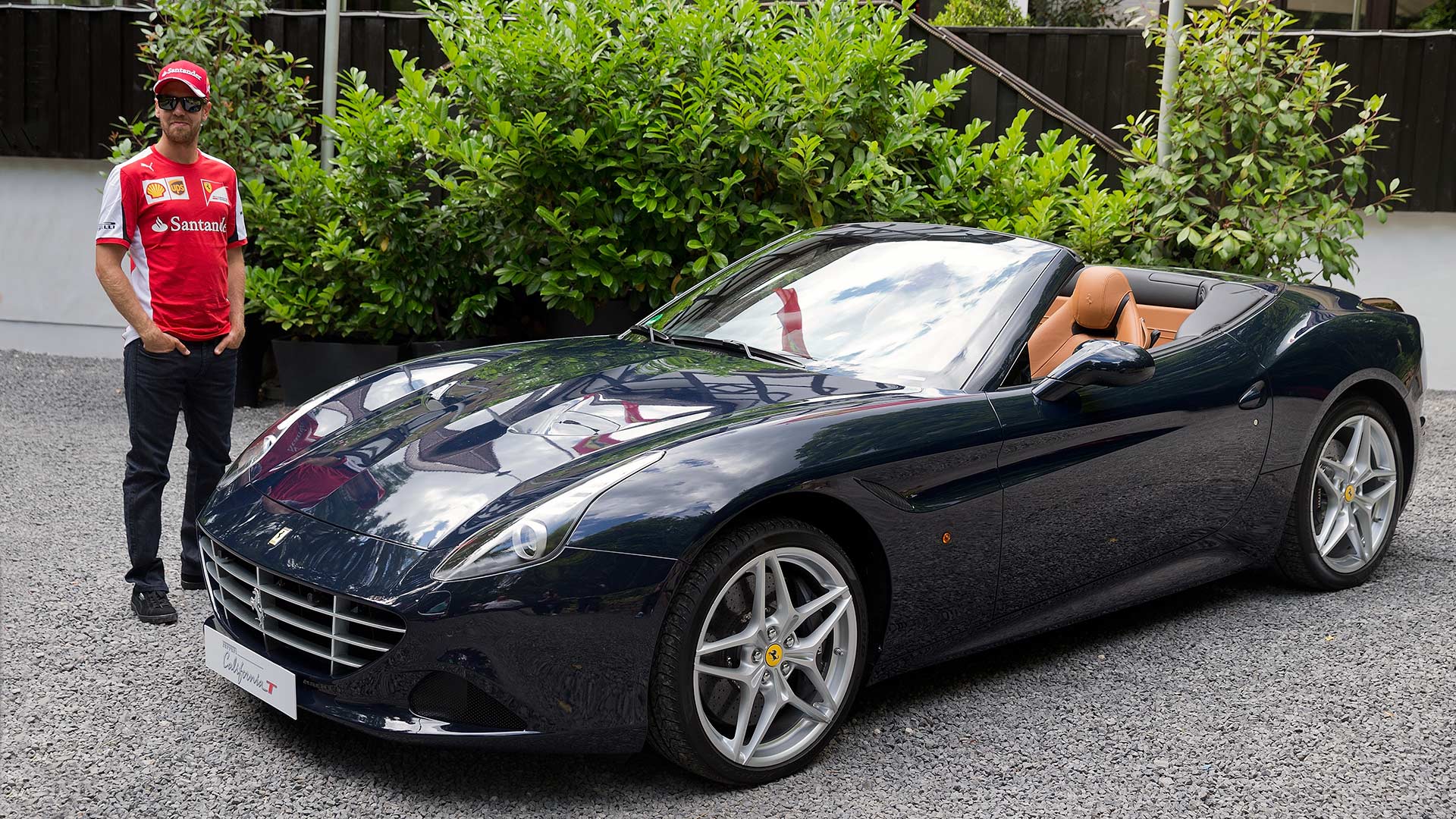
Sebastian Vettel and Ferrari California T
© FerrariThe advantage of driving for a company which solely makes exotic sports cars means that the company car choices tend to be impressive. Four-time World Champion Sebastian Vettel moved to Ferrari for the 2015 season, and wasted no time in getting involved with the range of road cars.
Vettel has appeared in videos promoting Ferrari road cars, including the California T convertible. Introduced in 2014, the California T was the first Ferrari to use a turbocharged engine since the F40, mirroring the move of F1 to forced-induction power.
-
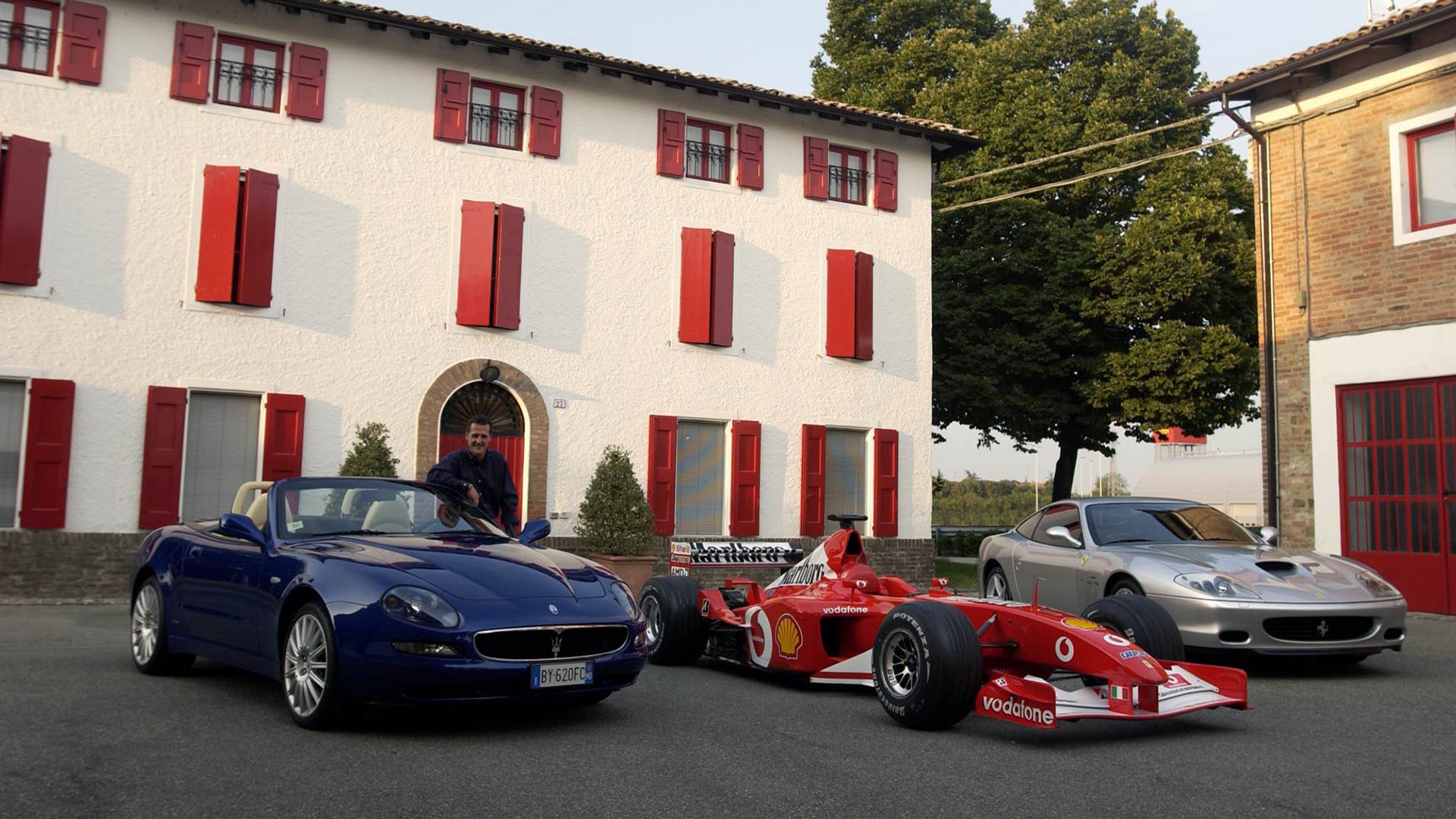
Michael Schumacher and his car collection
© FerrariWinning five Formula 1 World Championships with Ferrari between 2000 and 2004, Michael Schumacher is rightly regarded as a legend by the Scuderia. His move to the Italian team in 1996 transformed Ferrari into a world-beating outfit, with a level of ruthless on-track efficiency never seen before.
Schumacher was also a keen advocate for Ferrari’s road cars, seen here alongside his race car and two vehicles from his own personal collection.
-
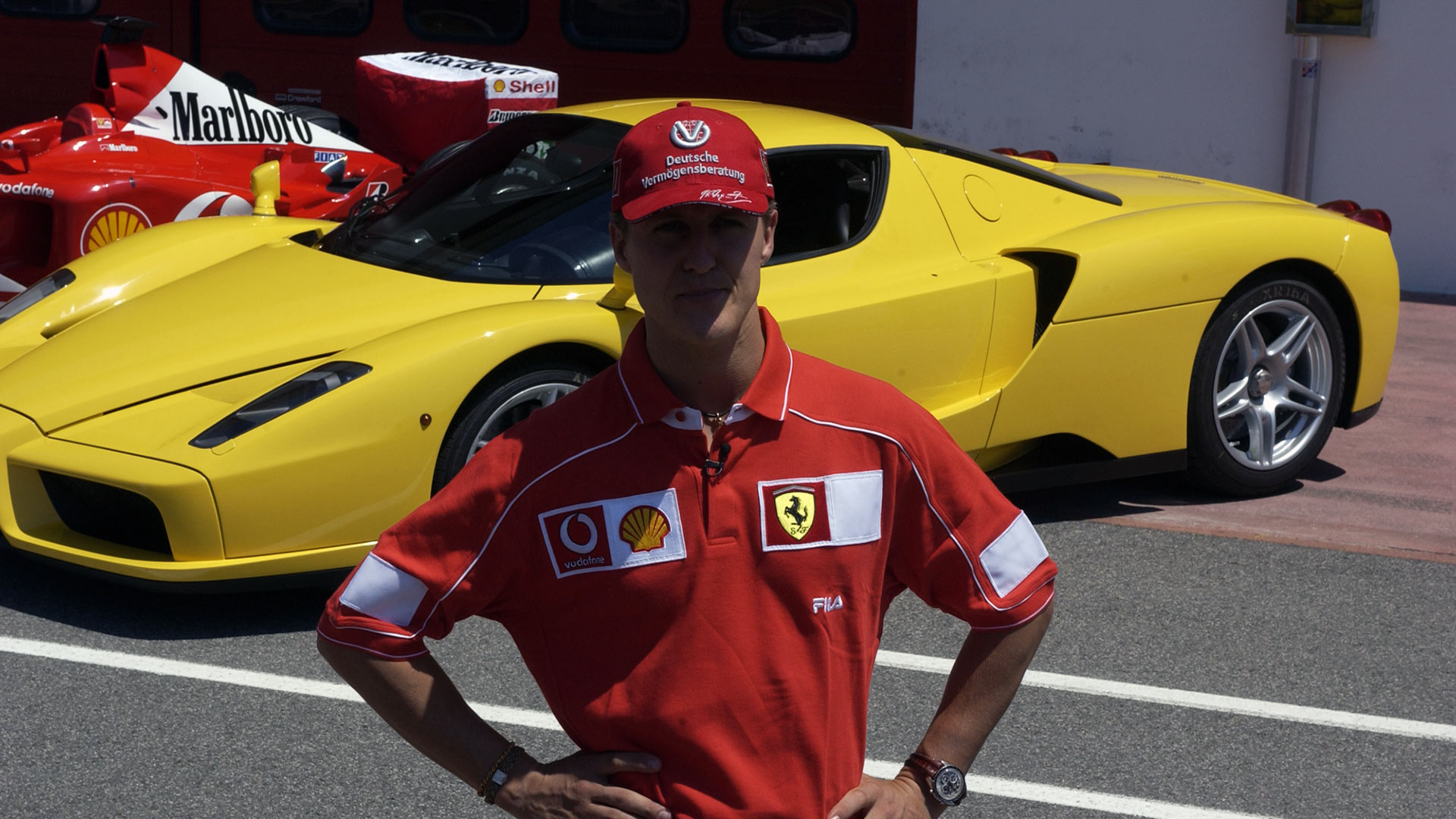
Developing the Enzo Ferrari with Michael Schumacher
© FerrariMuch like Mercedes-AMG with the One, Ferrari has created several F1-inspired road cars and made use of its talent in the Scuderia to help develop them. Schumacher’s dominance of the sport coincided with the creation of the 2002 Enzo Ferrari. This hypercar was made from carbon fibre and powered by a mid-mounted V12 engine with 651 hp.
Other items taken from Formula 1 included a paddle shift transmission, and brakes featuring carbon ceramic discs. Schumacher assisted in refining the abilities of the Enzo, and also worked on the track-only FXX version. The German driver later owned examples of both the Enzo and FXX.
-
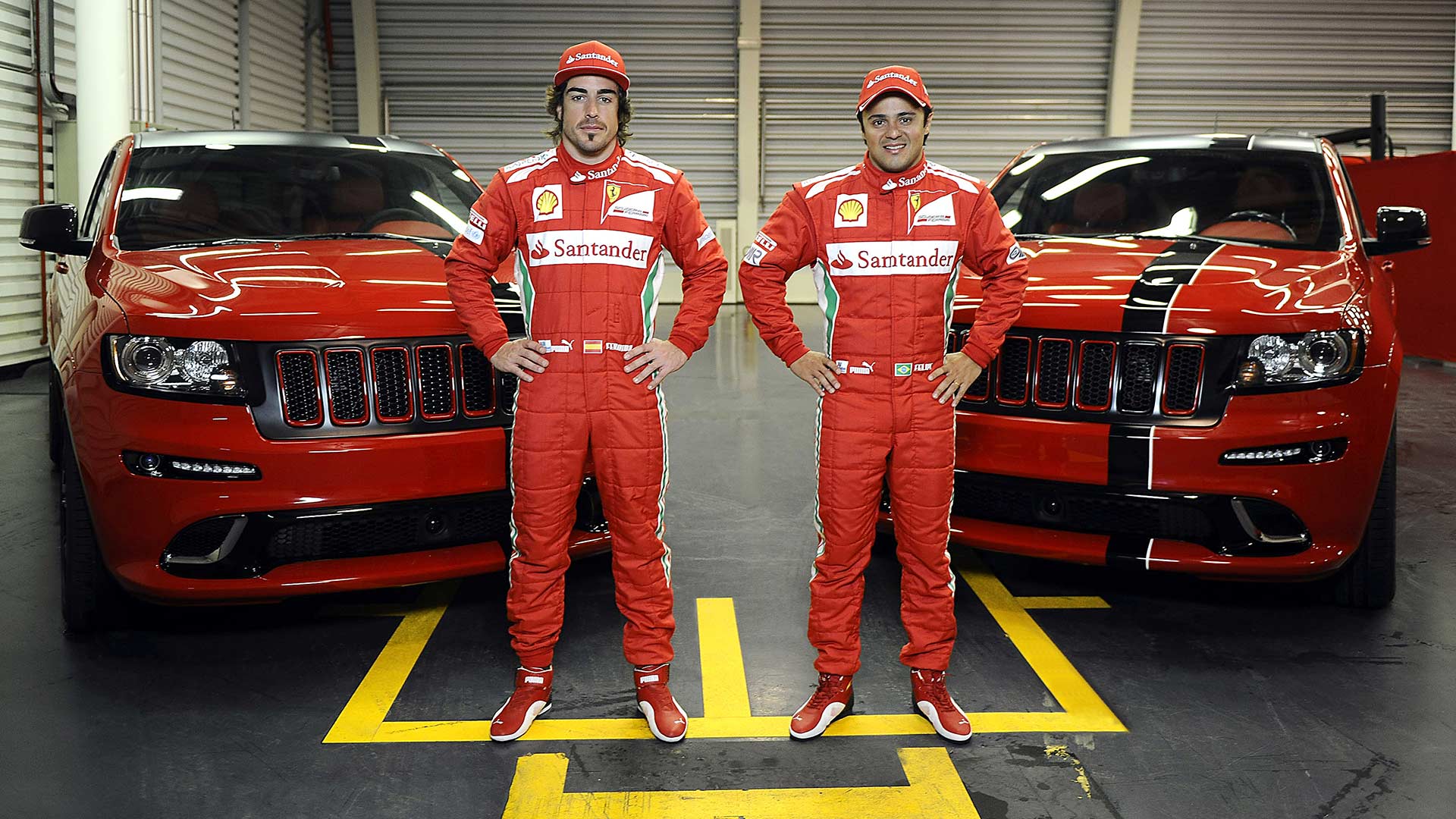
Alonso and Massa with custom Jeep Grand Cherokee SRT8s
© JeepAfter Chrysler entered Chapter 11 bankruptcy in 2009, the purchase of the company by Fiat resulted in the giant Fiat Chrysler Automobiles corporation. The range of brands means that Ferrari can be linked to Mopar offerings like Jeep and Dodge.
In 2012, Ferrari drivers Fernando Alonso and Felipe Massa were given SRT8 versions of the Jeep Grand Cherokee inspired by their racing machines. Ferrari leather was added to the interior, along with unique 20-inch alloy wheels on the outside. A 6.4-litre Hemi V8 with 462 hp meant performance was quick, if not quite in the territory of F1 cars.
-
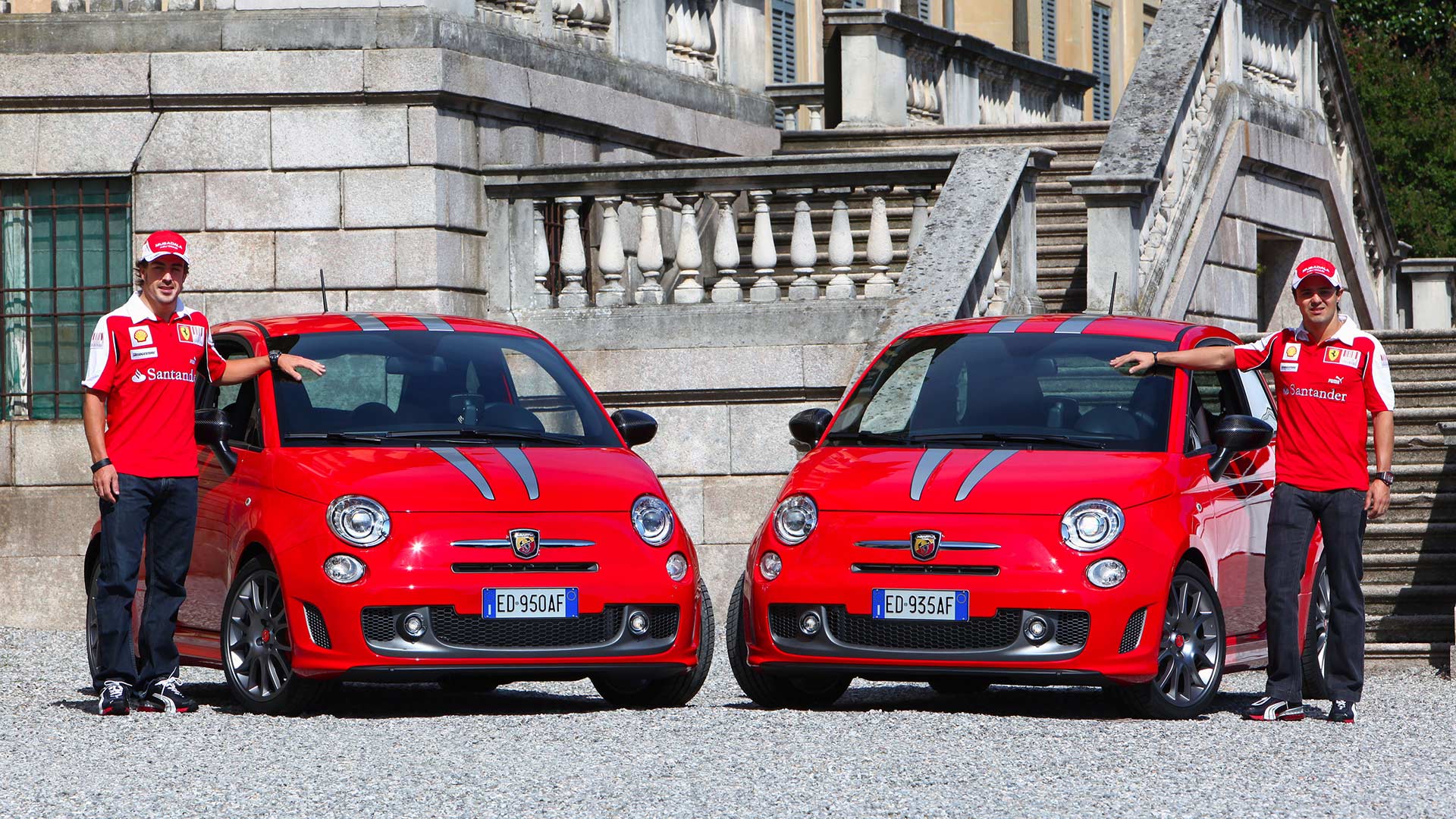
Abarth 695 Tributo Ferrari for Alonso and Massa
© AbarthAlonso and Massa will have needed sizable garages during their time at Ferrari. In 2010, the duo received their own Abarth 695 Tributo Ferrari, featuring a 180 hp 1.4-litre turbocharged four-cylinder engine. Naturally, an F1-inspired paddle shift transmission was part of the package.
Painted in the same Scuderia Red as the Ferrari F1 racers, carbon fibre was used for various parts including the exterior mirror covers. Brembo performance brakes, and special 17-inch wheels added to the deal, but the F1 link was tenuous at best.
-
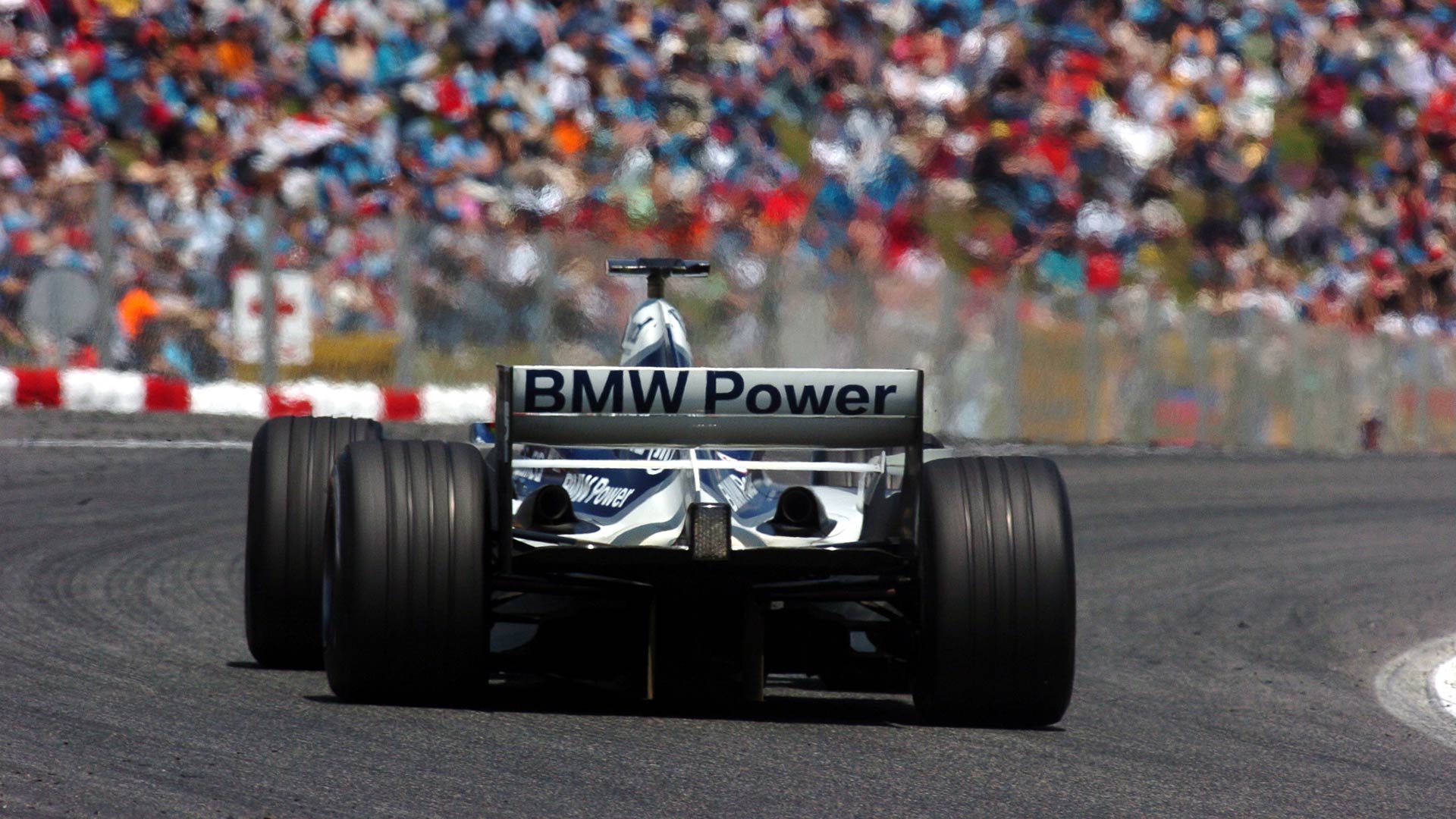
BMW’s brand takeover of Williams Racing
© BMWIn the early 2000s, the only cars capable of coming close to Ferrari during their dominant period were powered by BMW engines. The German company had launched a partnership with the Williams team, leading to the outfit being branded as BMW Williams F1.
Along with developing V10 engines for use in the Williams F1 cars, the racing cars were also finished in a BMW-inspired blue and white livery. German driver Ralf Schumacher, brother of Michael Schumacher, was retained along with Columbian Juan Pablo Montoya for driving duties.
-
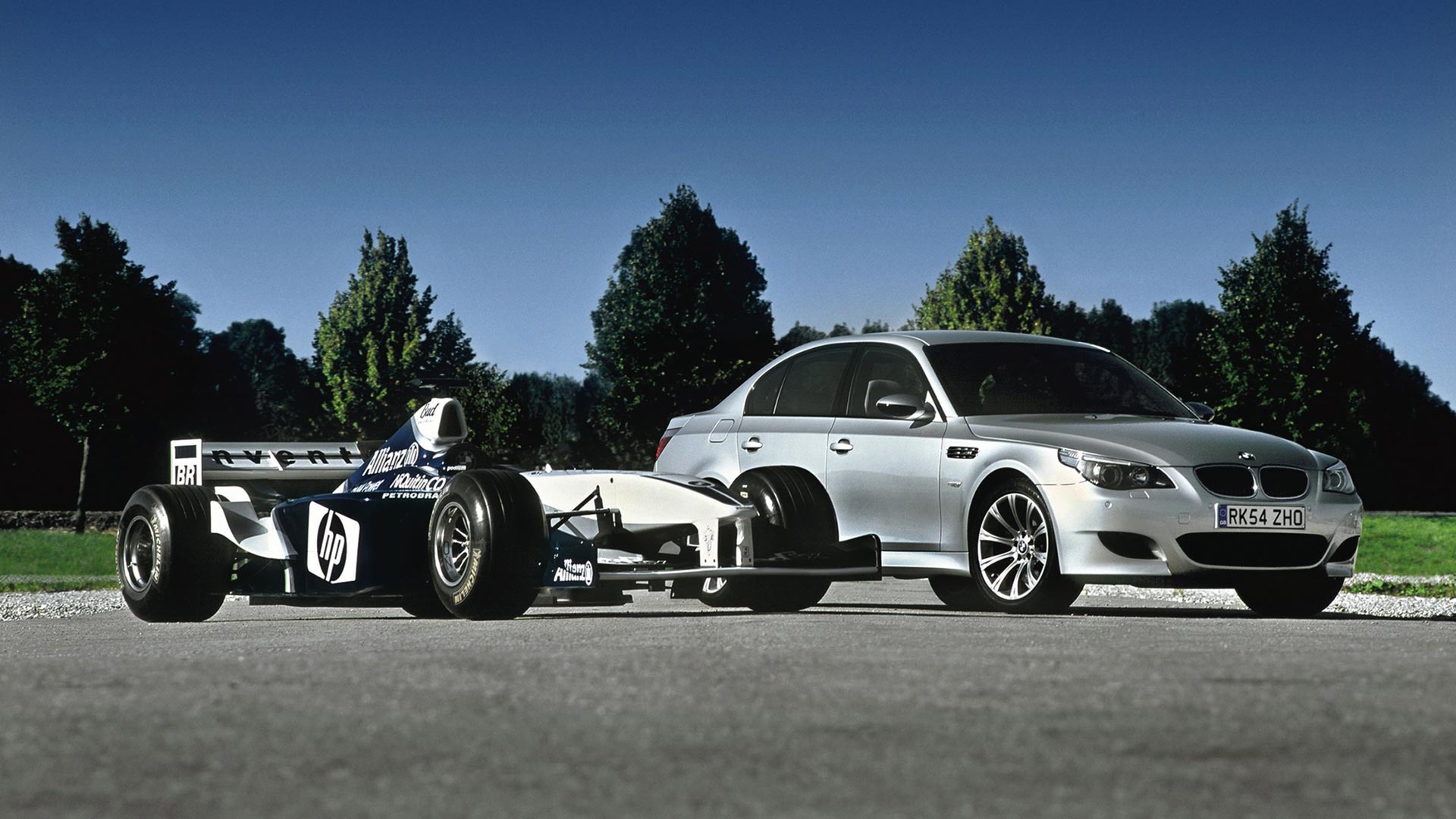
F1 technology for BMW road cars
© BMWWhilst Ferrari would still take multiple championships, the naturally aspirated P83 V10 engine built by BMW in 2003 was regarded as one of the greatest ever made. Revving to 19,000 rpm, it generated a staggering 940 hp.
BMW was keen to highlight the ability of its engines, and fitted the 2005 E60 M5 with a 5.0-litre V10 producing 500 hp and 384 lb-ft of torque. A seven-speed paddle shift transmission was also inspired by F1, although American customers were offered a six-speed manual unit, too. The same drivetrain combination was also fitted to the 2005 M6 coupe and convertible.
-
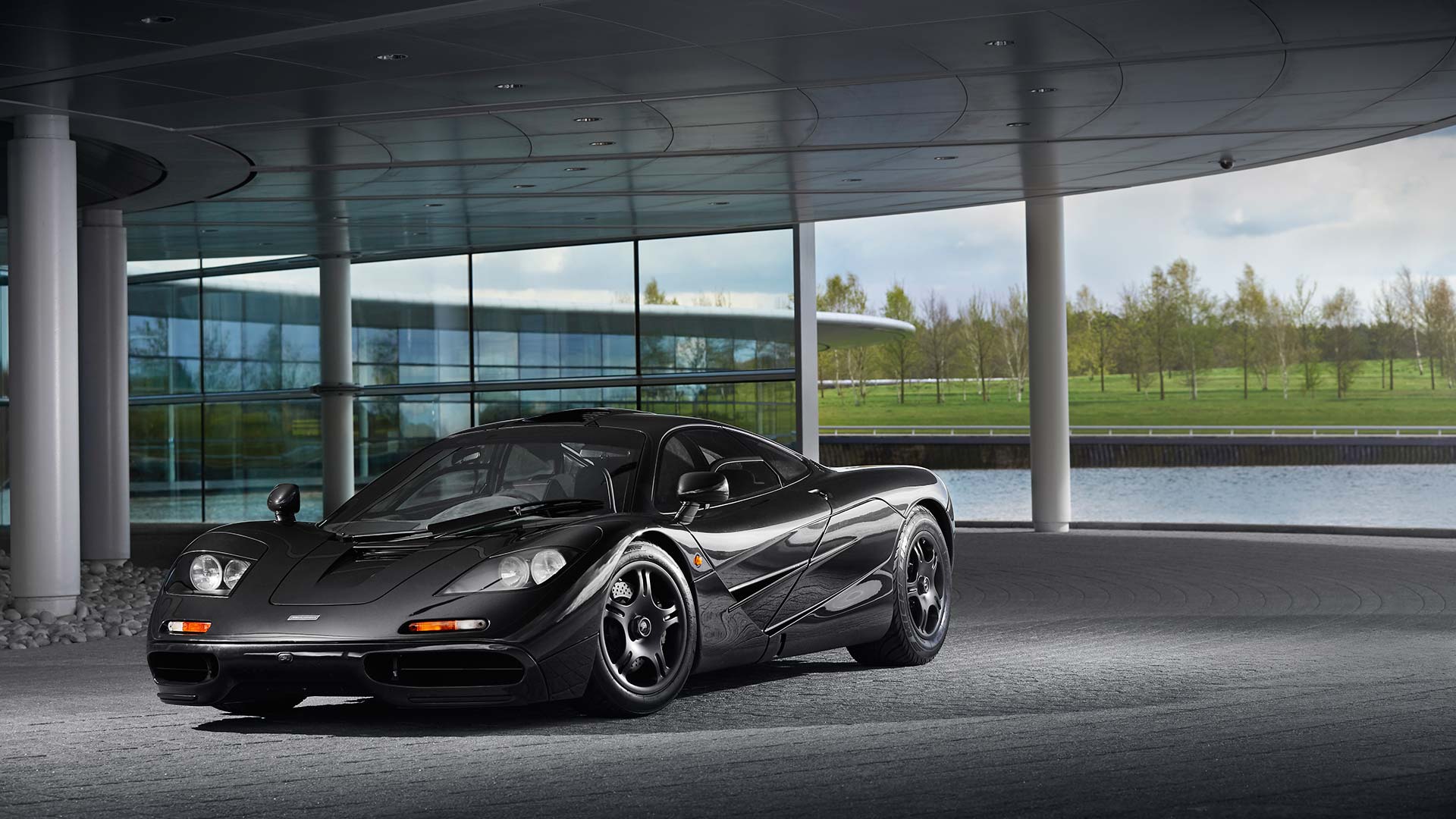
McLaren names a supercar after Formula 1
© McLarenMcLaren had been the dominant team in F1 during the late 1980s and early 1990s, mastering the use of lightweight materials like carbon fibre. Designer Gordon Murray convinced McLaren to back his vision of a three-seater sports car, using the knowledge the company had gained from Formula 1.
The result was the F1, built around a carbon fibre chassis and fitted with a BMW V12 engine. Murray had been fastidious in his pursuit of performance, with details like gold leaf used in the engine bay as a heat shield. With 618 hp, the F1 became the world’s fastest production car in 1998, setting a top speed of 240.1 mph.
-
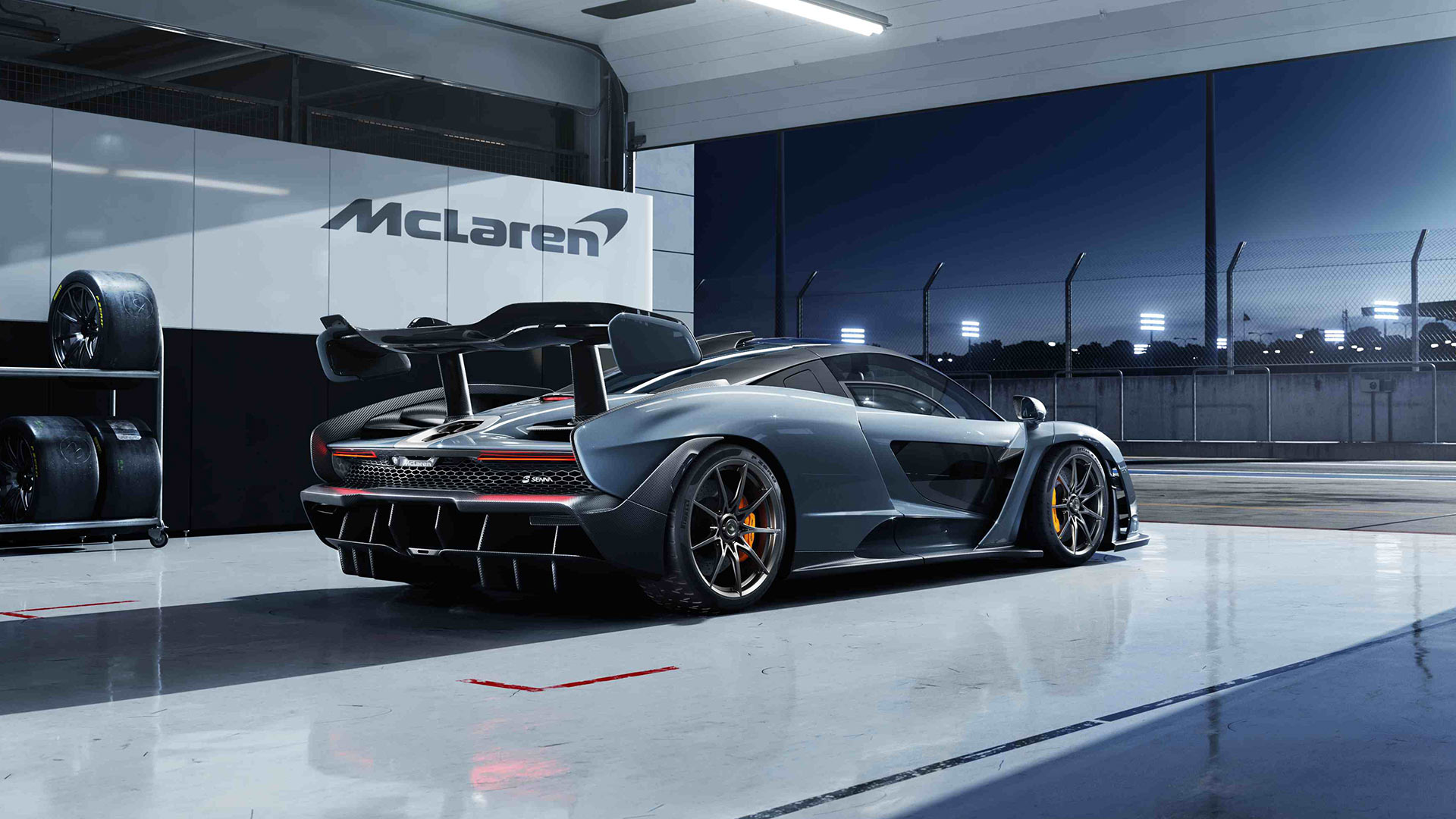
McLaren names a supercar after a legendary driver
© McLarenThe F1 was the first step taken by McLaren into the road car market, with the company now responsible for producing almost 5,000 cars a year. In 2018 it introduced the latest in its ‘Ultimate Series’, named after Ayrton Senna – the legendary F1 driver who won three World Championships with McLaren.
Limited to 500 units, the Formula 1 inspiration includes Brembo carbon ceramic brakes, special centre-lock alloy wheels, and a roof-mounted air intake. Power comes from a twin-turbocharged V8 engine, producing 789 hp and 590 lb-ft of torque.
-
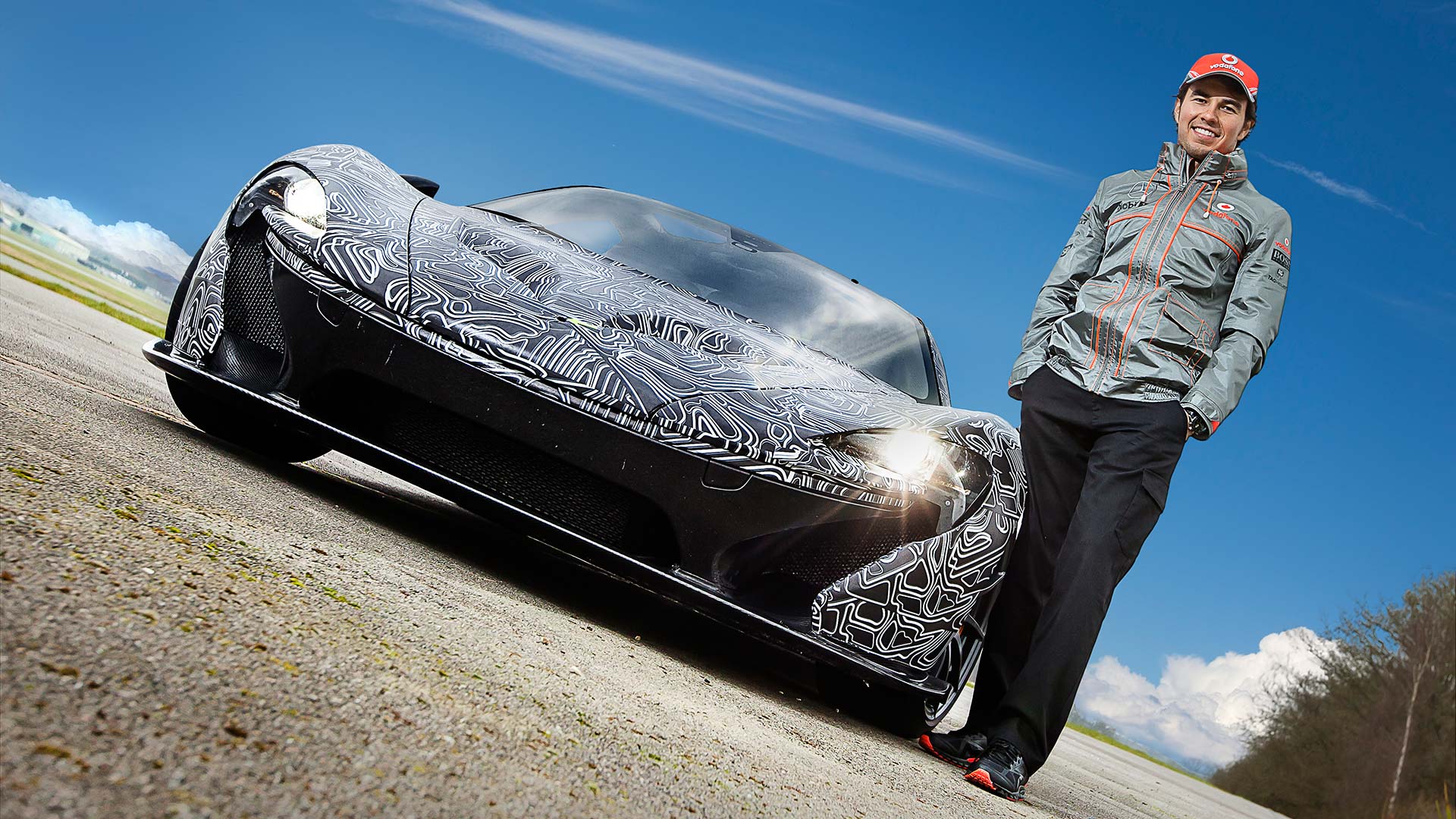
Sergio Perez and the McLaren P1
© McLarenBefore the Senna, McLaren Automotive’s most recent Ultimate Series hypercar was the P1. Launched in 2013, the development and release of the hybrid-powered machine coincided with Mexican driver Sergio Perez joining the McLaren Formula 1 team.
Part of this included Perez being tasked with demonstrating the performance of the new P1 road car on the Top Gear test track. Driving a 903 hp hypercar on a closed course was likely to be one of the easier corporate responsibilities for Perez, who was unceremoniously dropped by McLaren at the end of the 2013 season.
-
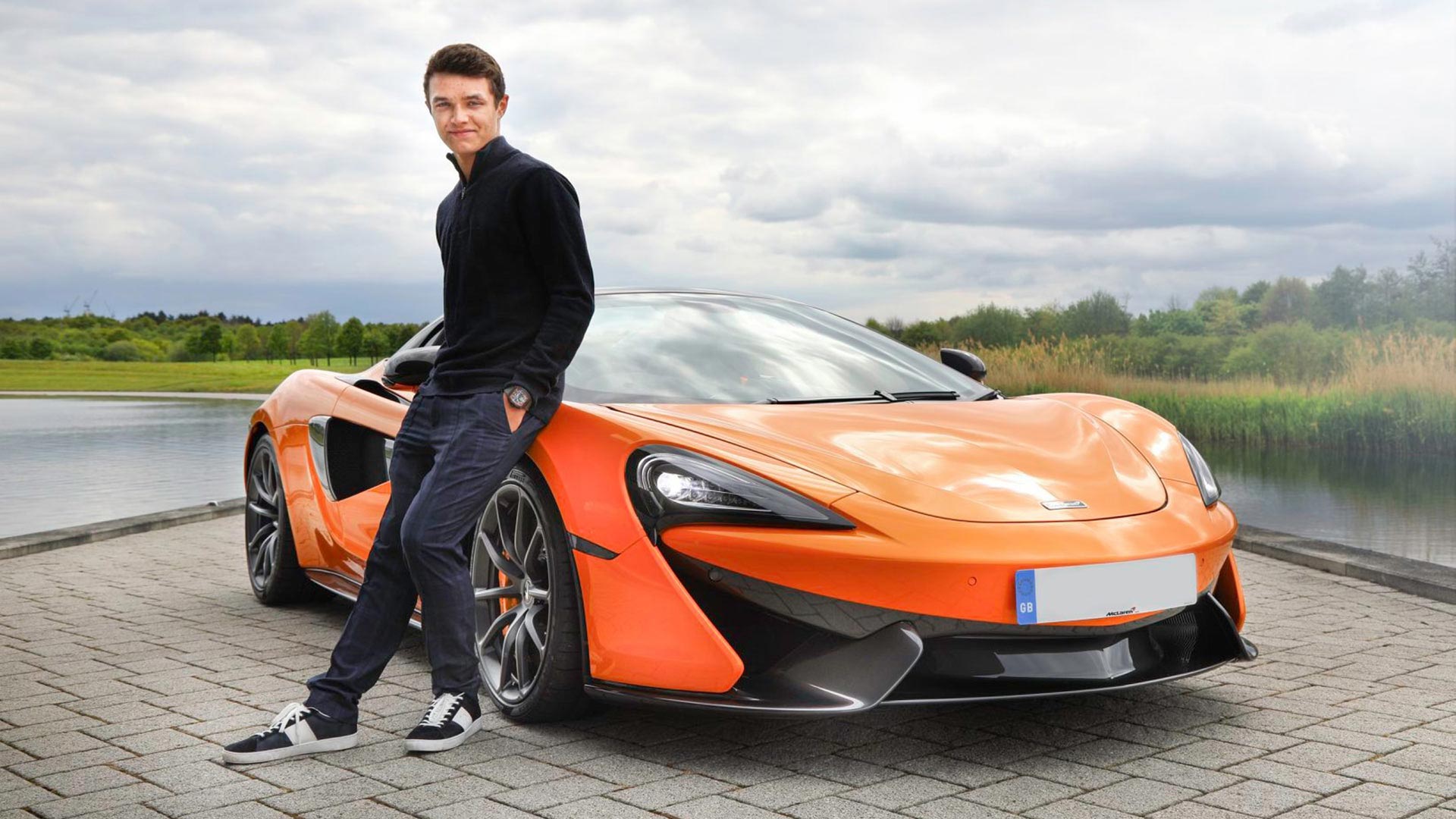
McLaren driver Lando Norris and his company car
© McLarenCurrent McLaren Formula 1 driver Lando Norris performed well in his first season with the team. The then 19-year-old was also rather pleased with his company car at McLaren, having taken delivery of a 570S coupe.
Powered by a twin-turbocharged V8 engine with 570 hp, the 570S is capable of a top speed in excess of 200 mph. This is certainly not your usual car for a teenager, but then Lando Norris is not an average teen driver.
-
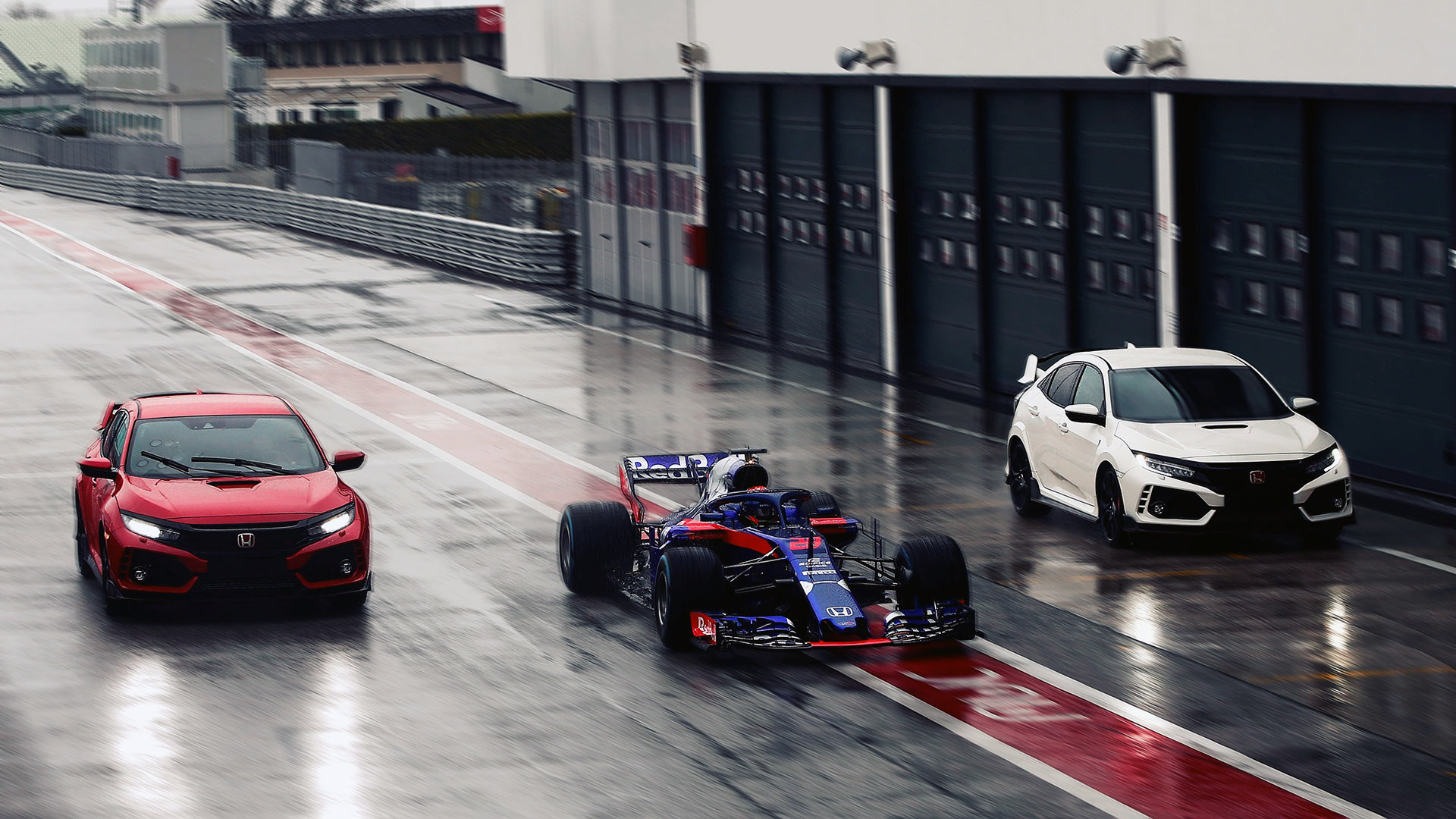
Linking the Honda Civic Type R to Toro Rosso
© HondaThe latest Honda Civic Type R has become the first version of the performance compact car to be sold in the United States. As a global product, Honda has been keen to use its presence in Formula 1 to spread the message of its new Type R.
Honda was previously the official supplier of engines to the Toro Rosso F1 team, meaning its drivers for the 2018 season bagged themselves new company cars. Pierre Gasly and Brendon Hartley took delivery of their own turbocharged Type Rs.
-
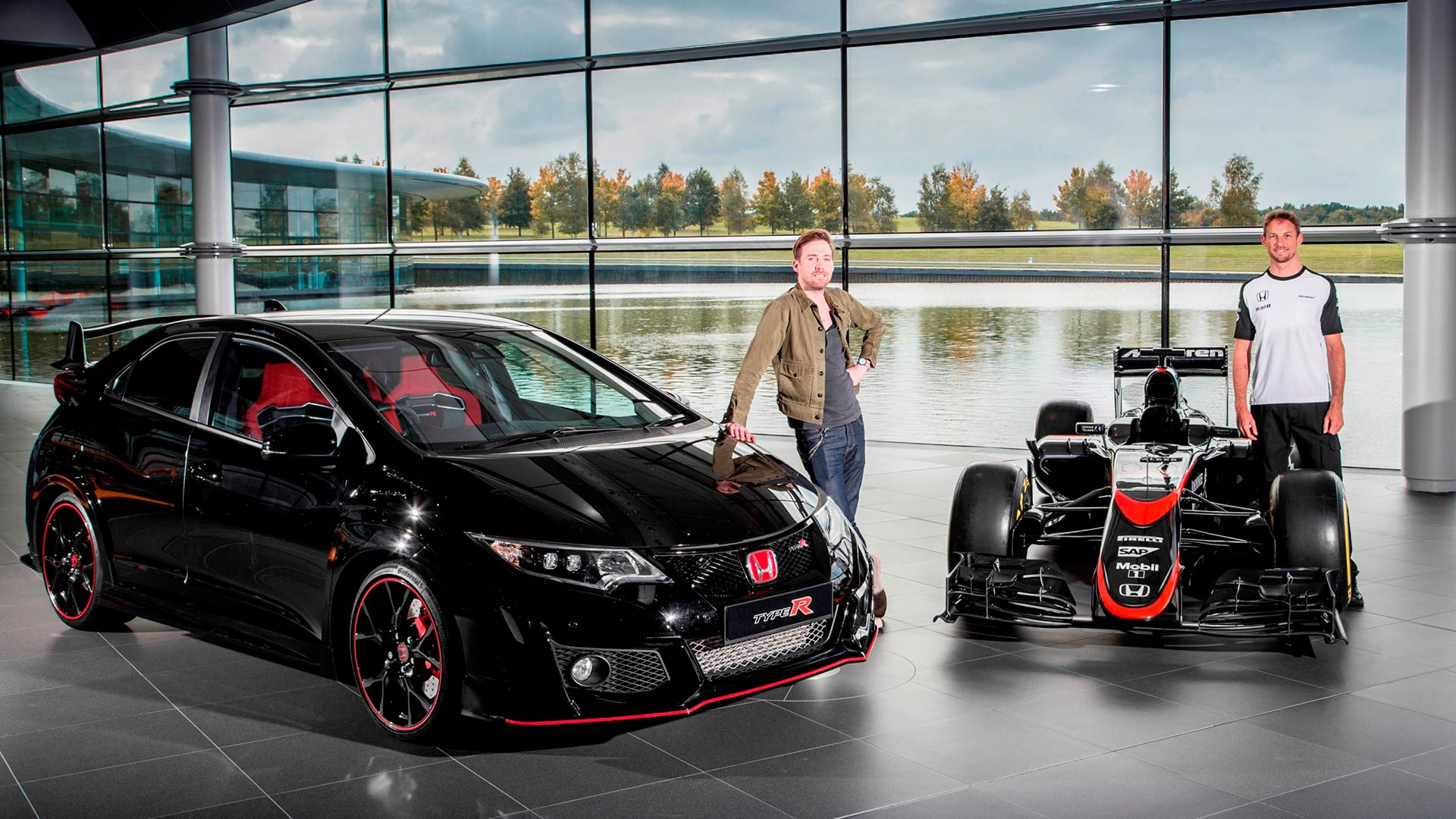
From a time when McLaren and Honda were still friends
© HondaHonda supplied McLaren with engines from the 2015 season through 2017. It marked the return of the Japanese manufacturer to F1 as an engine builder for the first time in seven years, with a change to the new turbo hybrid era also taking place.
The three seasons were fraught, with the Honda engines suffering from terrible reliability issues. Even when it did work, the power plant was also noted to be down on performance. Despite this, McLaren driver Jenson Button still had to try and help sell the benefits of the Honda Civic Type R and its turbocharged engine.
-
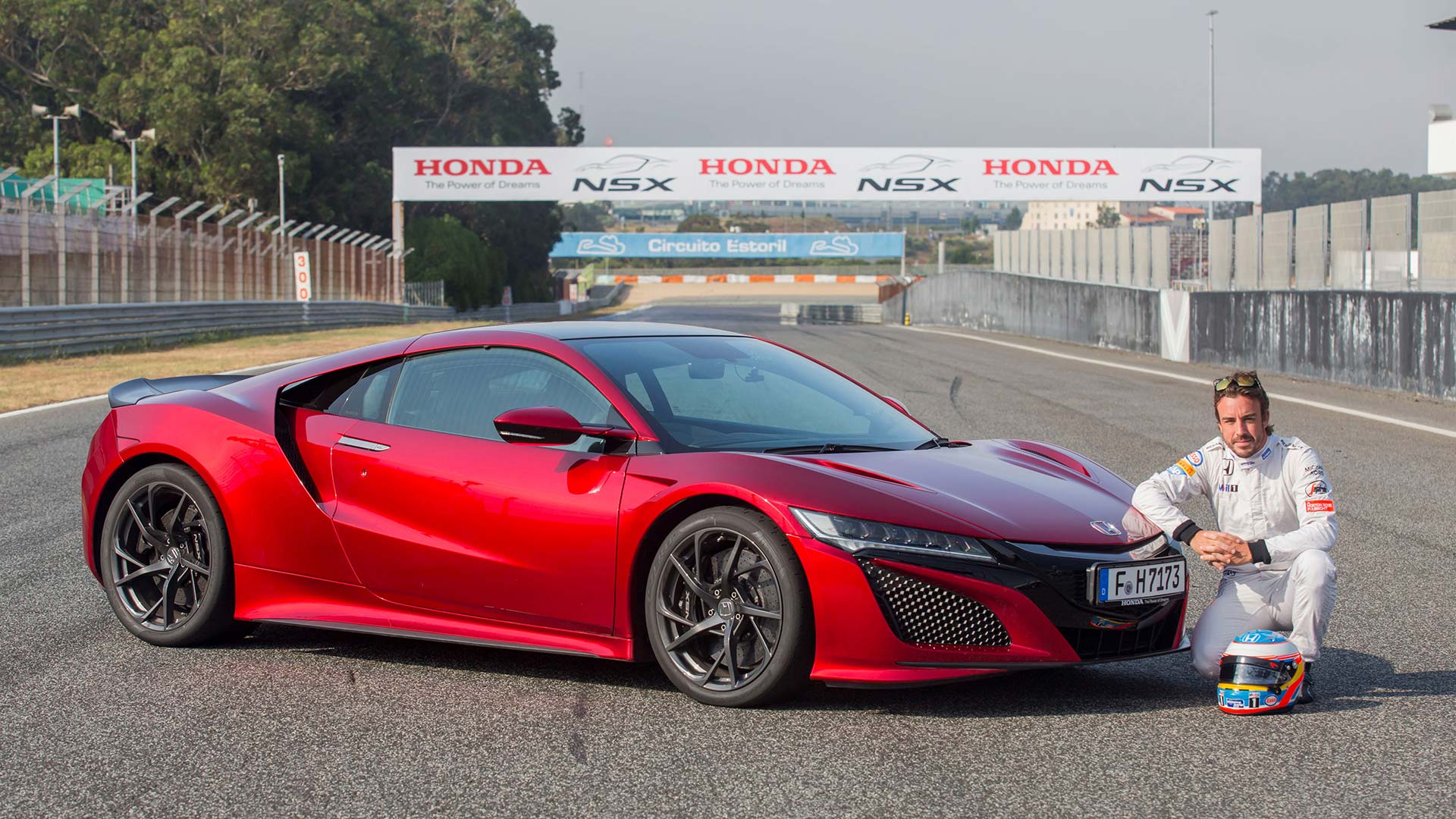
Fernando Alonso tests the new NSX
© HondaThe original Acura NSX was developed with assistance from Ayrton Senna, whilst Honda was responsible for supplying engines to McLaren. Fast-forward to the second-generation NSX, and Honda was once again in charge of engines to power McLaren’s F1 contenders.
Despite the animosity between the two companies, McLaren driver Fernando Alonso still took part in marketing events like driving the new NSX. F1 inspiration can be found in the turbocharged V6 engine and its hybrid electric powertrain. Alonso also found that the braking ability of the NSX was closest in feel to his F1 racer.
-
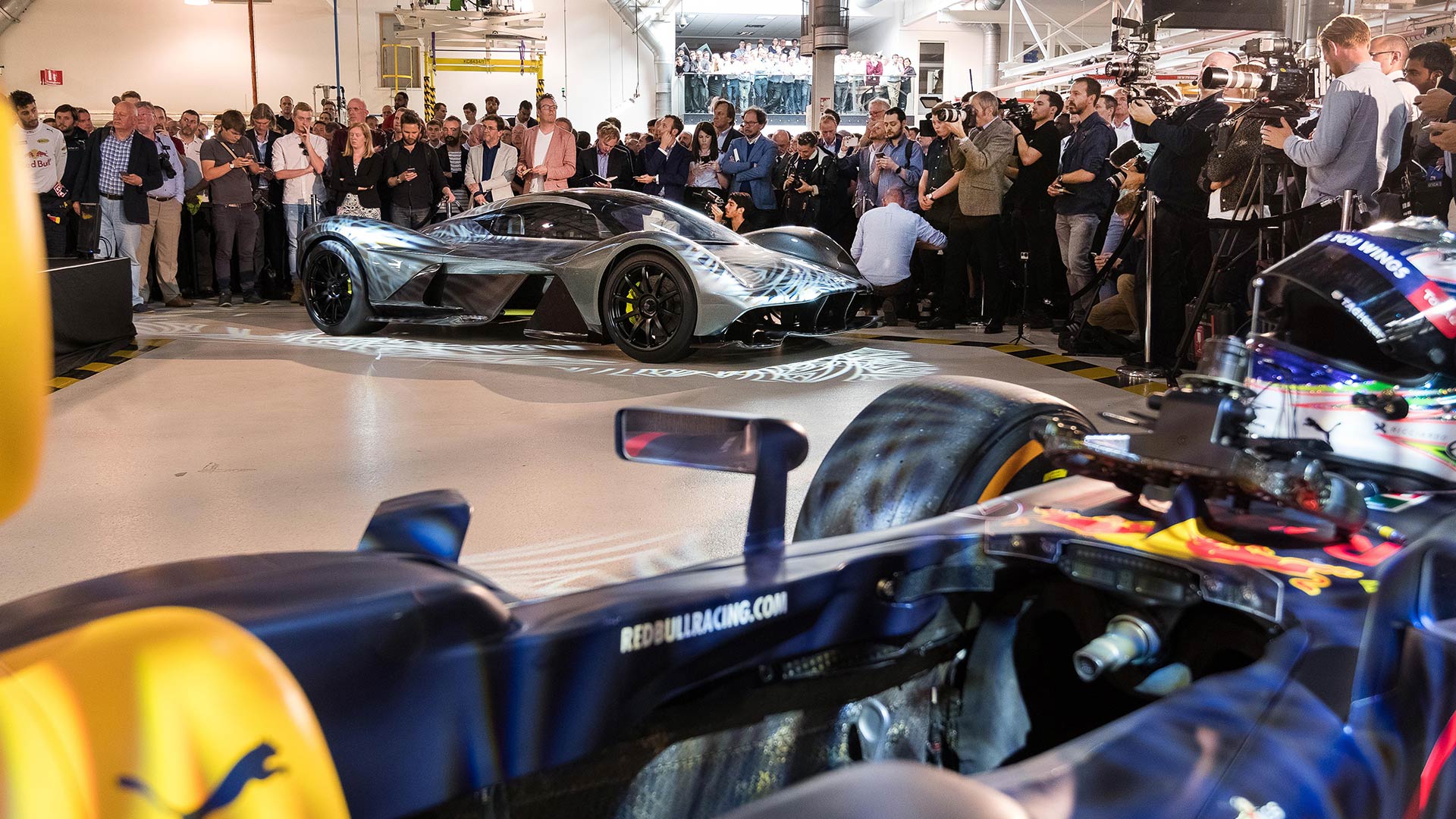
Aston Martin and Red Bull Racing working together
© Aston MartinRed Bull Racing adopted car manufacturer Aston Martin as a title sponsor during 2018, whilst the two companies were involved in the creation of the ultimate road car. Details first emerged in 2017 of plans for a mid-engined Aston Martin hypercar, with input from Adrian Newey – Red Bull Racing’s Chief Technical Officer.
Advanced aerodynamics, lightweight carbon fibre construction, and an F1-inspired energy recovery system are all ideas provided by Red Bull Racing for the Valkyrie.
Aston Martin has since gone on to become a Formula 1 team in its own right.
-
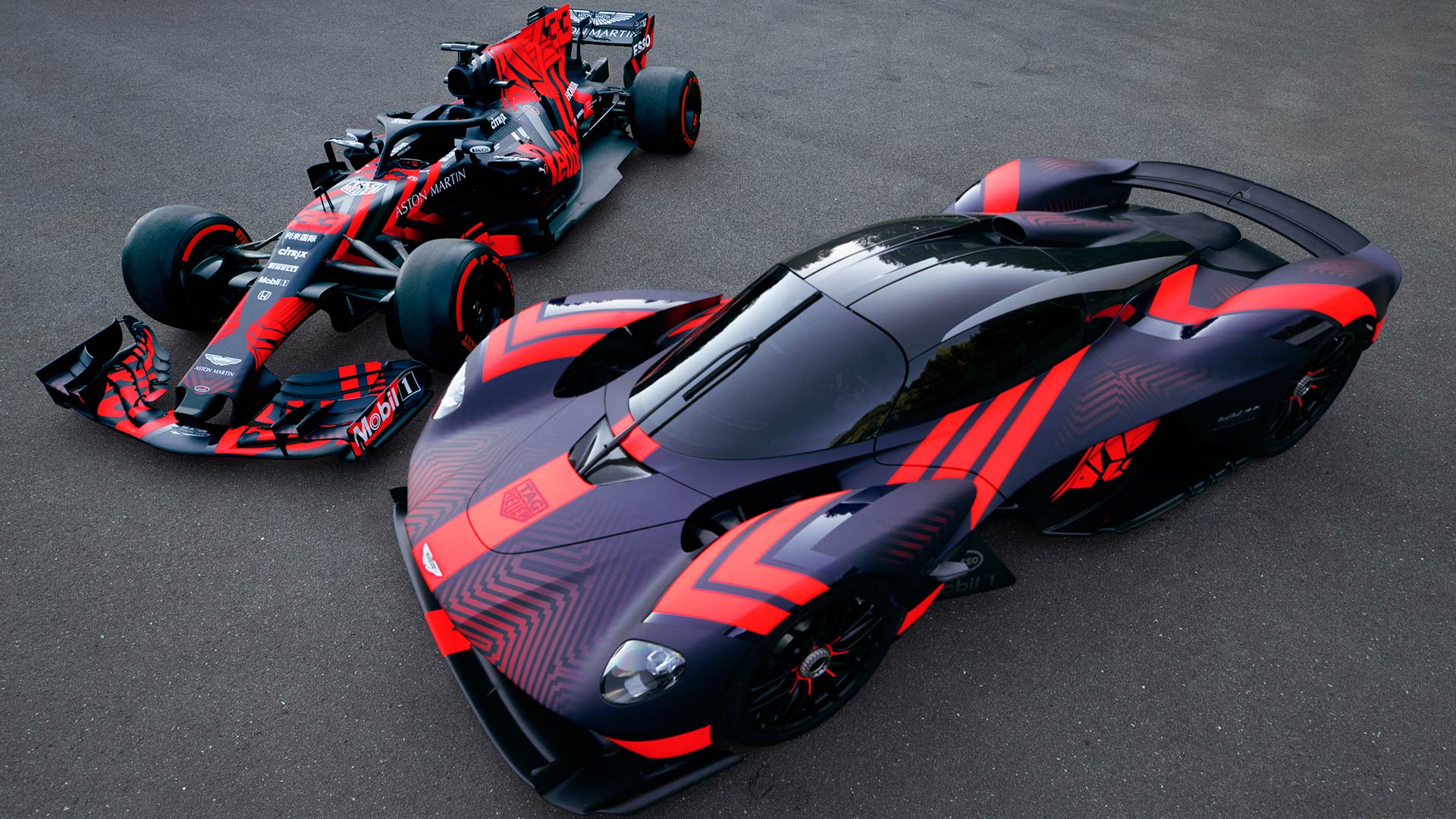
Aston Martin Valkyrie hits the tracks
© Aston MartinThe engine in the Valkyrie is supplied by Cosworth Racing, producing an astonishing 1,160 hp from a 6.5-litre V12. An F1-style paddle shift transmission is part of the package, whilst the seats for each of the 150 examples of the Valkyrie will be custom fitted to their buyer.
For those who find the regular Valkyrie too vanilla, Aston Martin also plans an AMR Pro version. This will feature a more aggressive energy recovery system for an extra power boost, and carbon-carbon brakes inspired by Formula 1. It will also generate so much downforce that the AMR Pro could, hypothetically, be driven upside down.
-
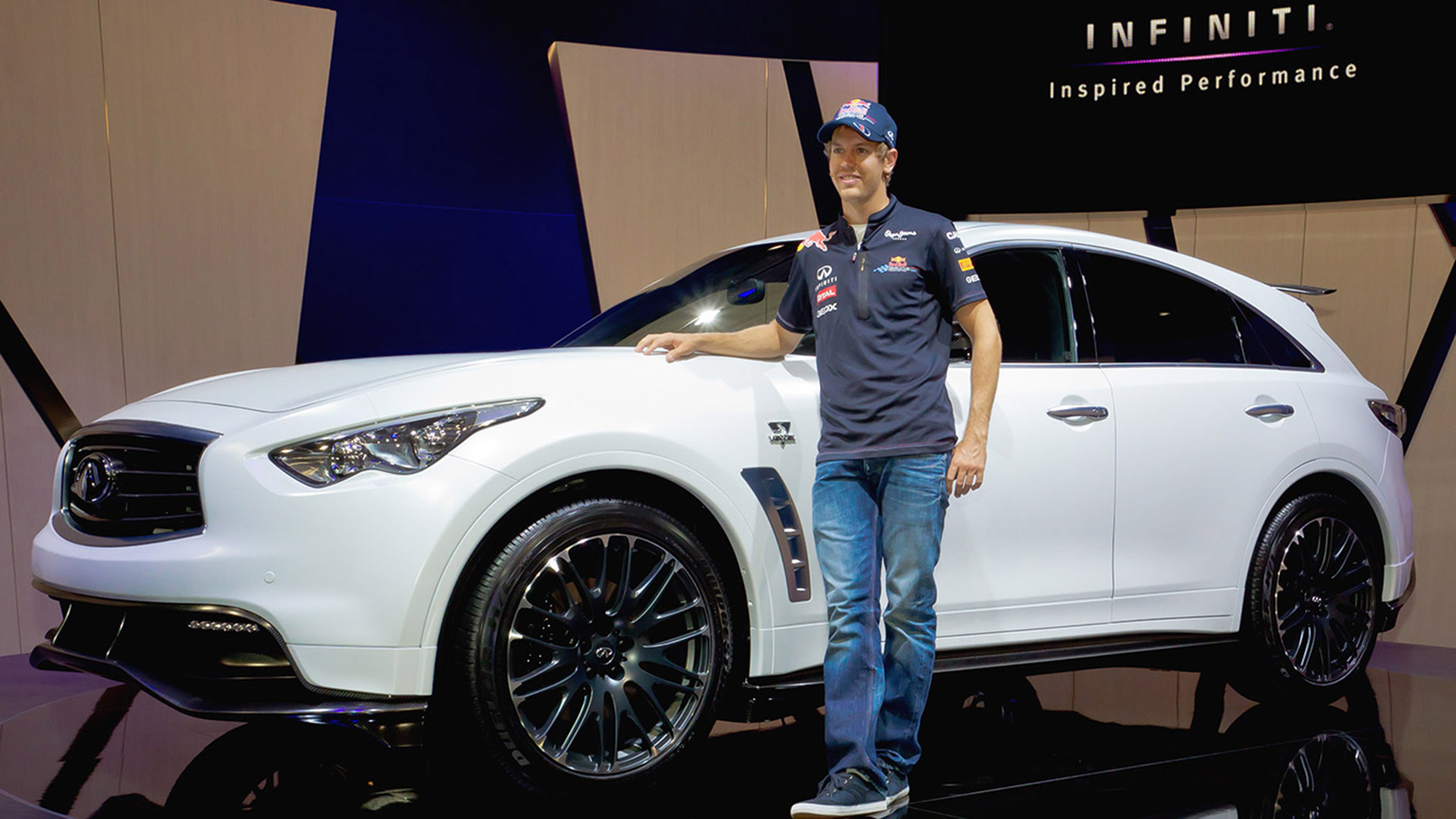
Infiniti rewards Vettel with a special edition FX50
© InfinitiRed Bull Racing enjoyed considerable success from 2010 to 2013, securing four World Championships with Sebastian Vettel. The team also established a sponsor partnership with Nissan’s luxury division, Infiniti.
To celebrate Vettel’s success, in 2012 Infiniti created a special edition of the FX50 SUV. The changes included matte white exterior paintwork, an aggressive aero kit inspired by an F1 car, and a 5.0-litre V8 engine with 420 hp. Buyers could also opt for a gigantic carbon fibre rear spoiler, adding even more to the list price.
-
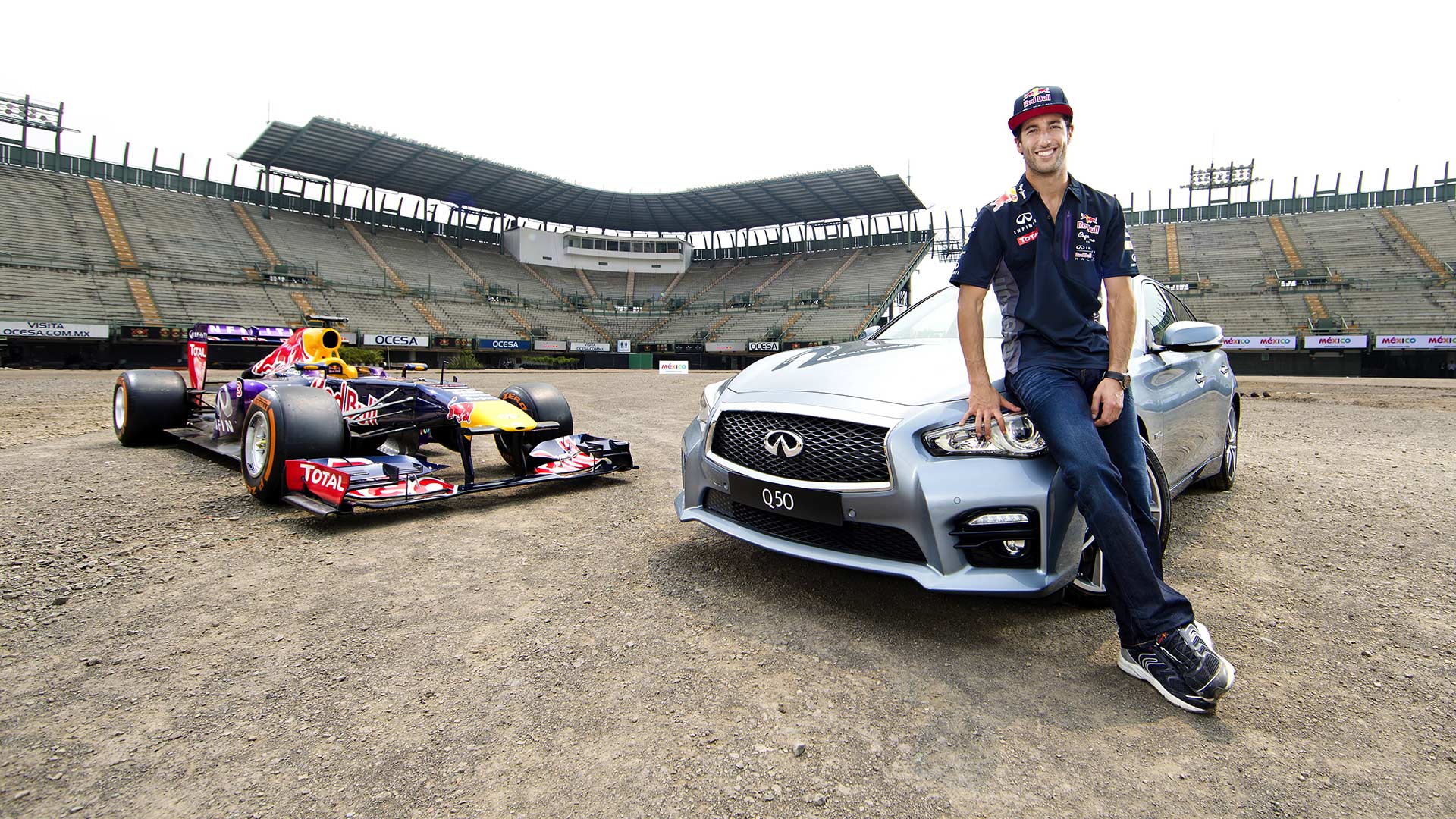
Daniel Ricciardo with the Infiniti Q50 Hybrid
© InfinitiAt least Vettel could be proud that Infiniti created a car with more power and a large spoiler for him. During his time with Red Bull Racing, in 2015 Australian driver Daniel Ricciardo became the first Formula 1 driver to test out the redesigned Autódromo Hermanos Rodríguez circuit in Mexico City.
Ricciardo had to make do with driving the updated race track in an Infiniti Q50 Hybrid sedan. This featured 359 hp from a 3.5-litre V6, combined with an electric motor. Ricciardo could only watch, as then Toro Rosso test driver Carlos Sainz Jr. took to the track in a Red Bull Formula 1 car.
-
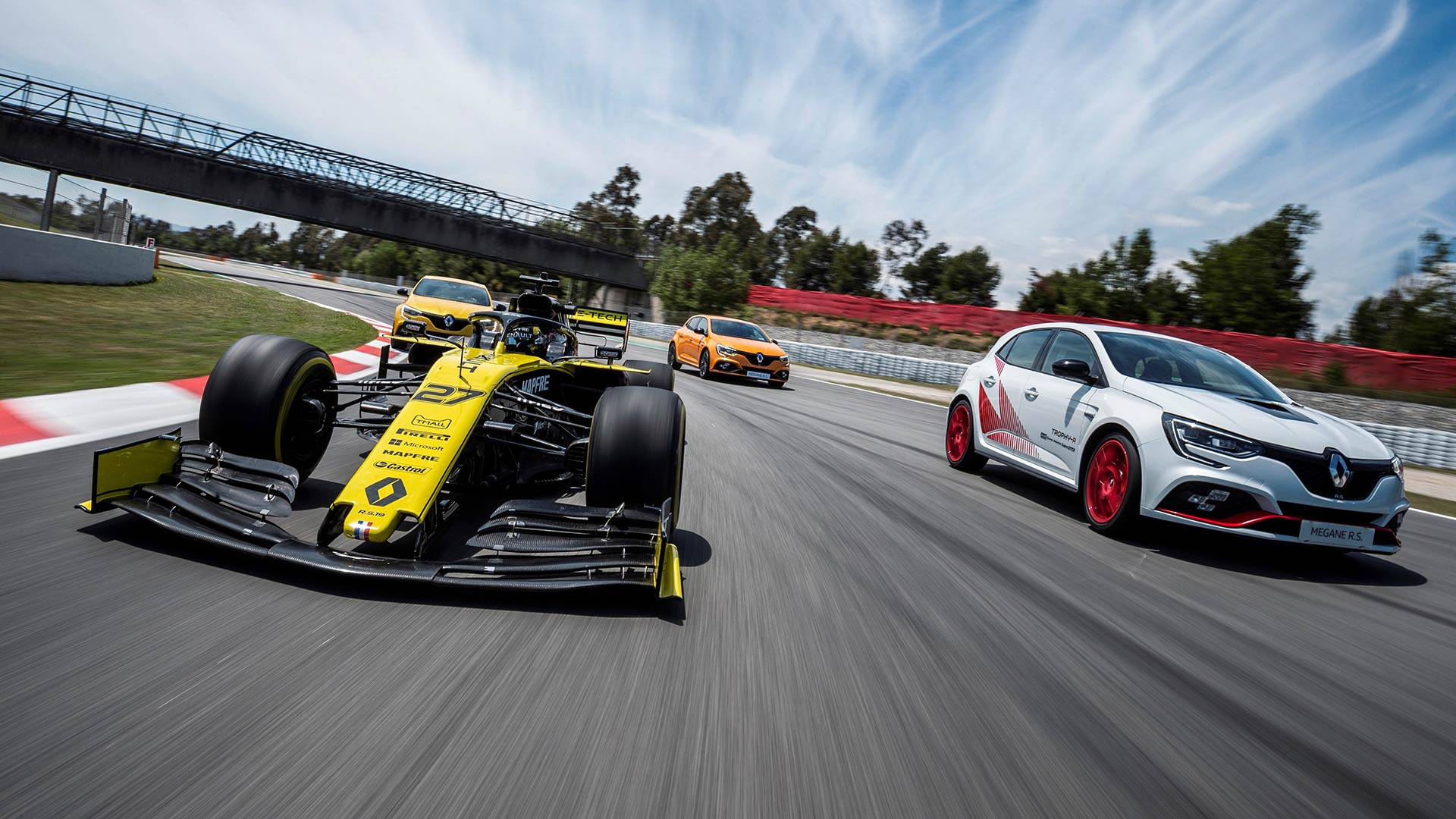
Renault Sport and the range of Megane hot hatches
© RenaultRenault has had a lengthy involvement with Formula 1, entering its own team in 1977 and supplying engines to others since 1983. Underpinning this on-track activity has been a range of road-going performance cars, said to take inspiration from the track.
This included the Megane R.S. Trophy-R, powered by a 300 hp 2.0-litre turbocharged engine. An Akrapovic titanium exhaust, carbon fibre bodywork for the bonnet and rear diffuser, plus optional carbon fibre wheels, all linked to Renault’s F1 efforts.
-
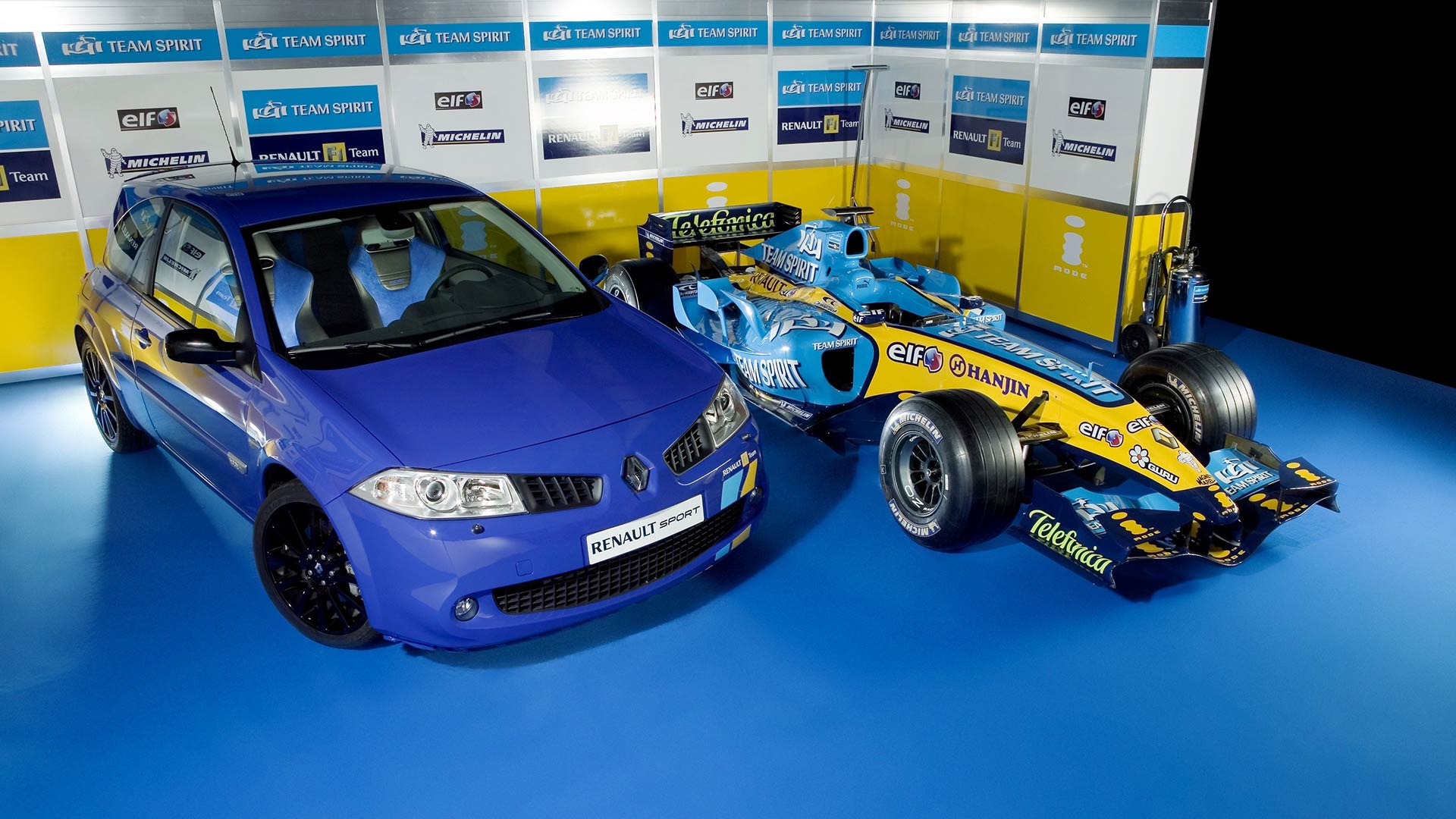
Megane Renault Sport 230 Renault F1 Team
© RenaultBack in 2006, Renault was the team to beat in Formula 1, as Fernando Alonso tasted title success with the team in 2005. A year later he was on track for a second championship, whilst Renault released a special edition of the Megane hatchback to celebrate.
In addition to the incredibly lengthy name, the R.S. 230 Renault F1 Team gained lightweight alloy wheels, special decals, and Recaro seats. Far removed from Alonso’s weekend racer, the R.S. 230 still proved popular with European hot hatchback fans.
-
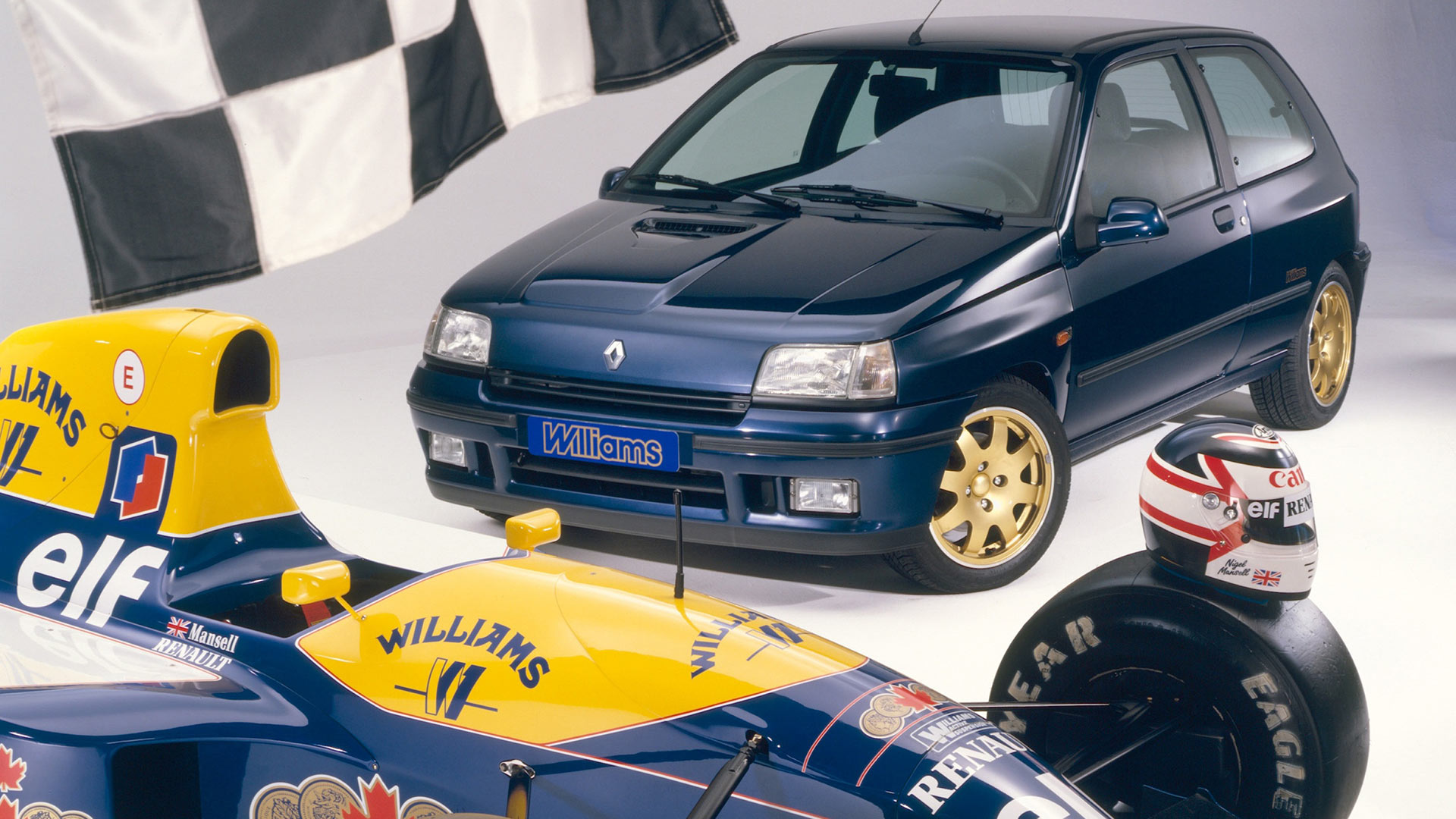
F1 dominance leads to the Renault Clio Williams
© RenaultRenault has a track record for producing hatchbacks inspired by Formula 1 success. The early 1990s saw a dominant partnership with Williams Racing, with a special version of the Clio supermini created in 1993. It led to a highly respected hot hatch, featuring a 145 hp 2.0-litre engine.
Although the links to the F1 were limited to badging at best, the Clio Williams did actually enjoy on-track action during the 1996 F1 season. A Clio Williams served as the safety car for the Argentine Grand Prix that year, spending several laps controlling the field.
-
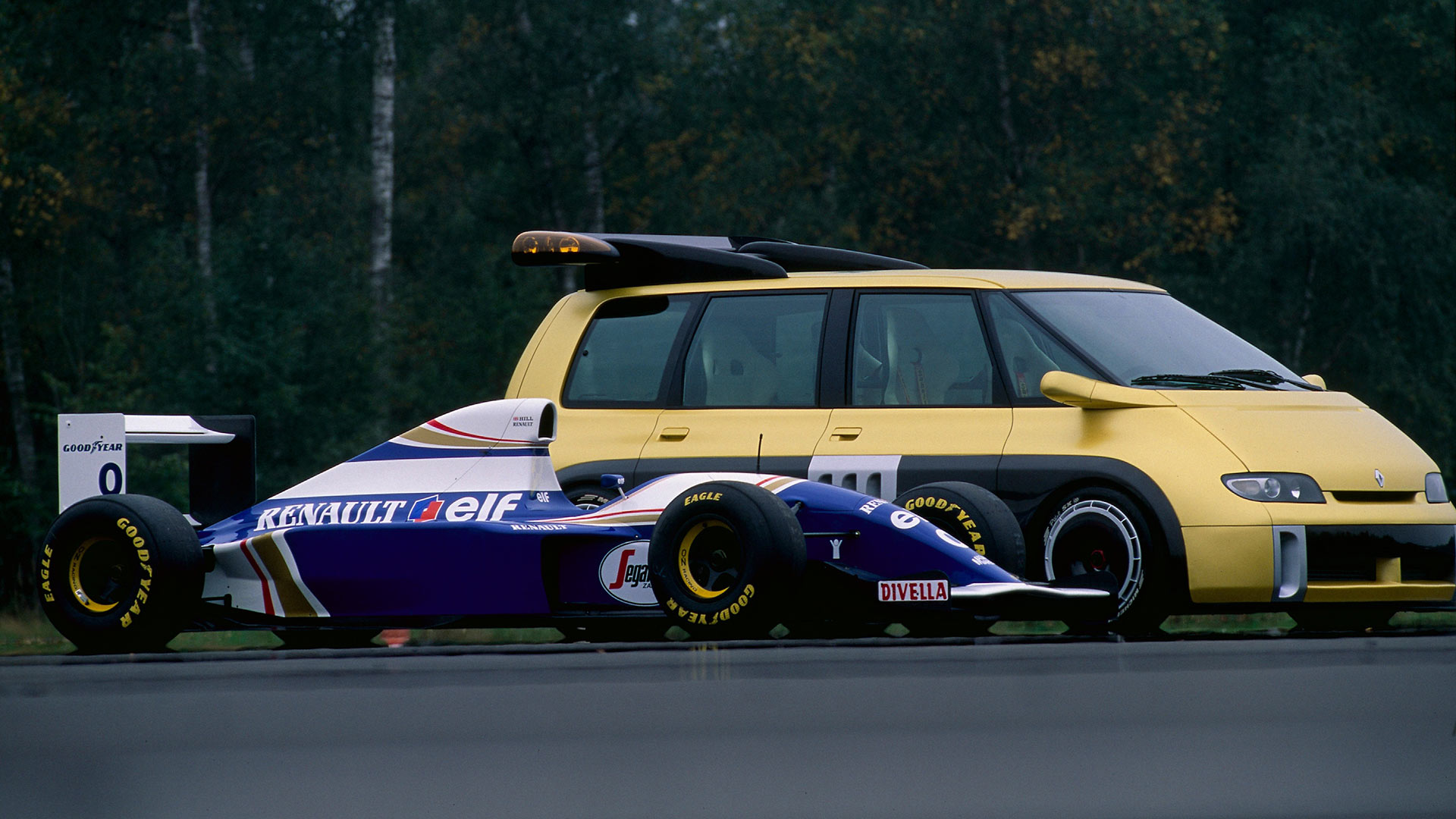
The time Renault placed an F1 engine in the Espace minivan
© RenaultTwo years later in 1995, Renault decided to celebrate its continued Formula 1 success with the sheer madness of the Espace F1. Mounted in the middle of the minivan was a 3.5-litre V1-20 engine taken directly from a Formula 1 car, and uprated to 789 hp.
A semi-automatic transmission was also fitted, along with carbon ceramic brakes. Four bucket seats allowed passengers to enjoy the performance, which included accelerating from 0-124 mph in just 6.9 seconds. Unsurprisingly, the Espace F1 remained as a concept only.
-
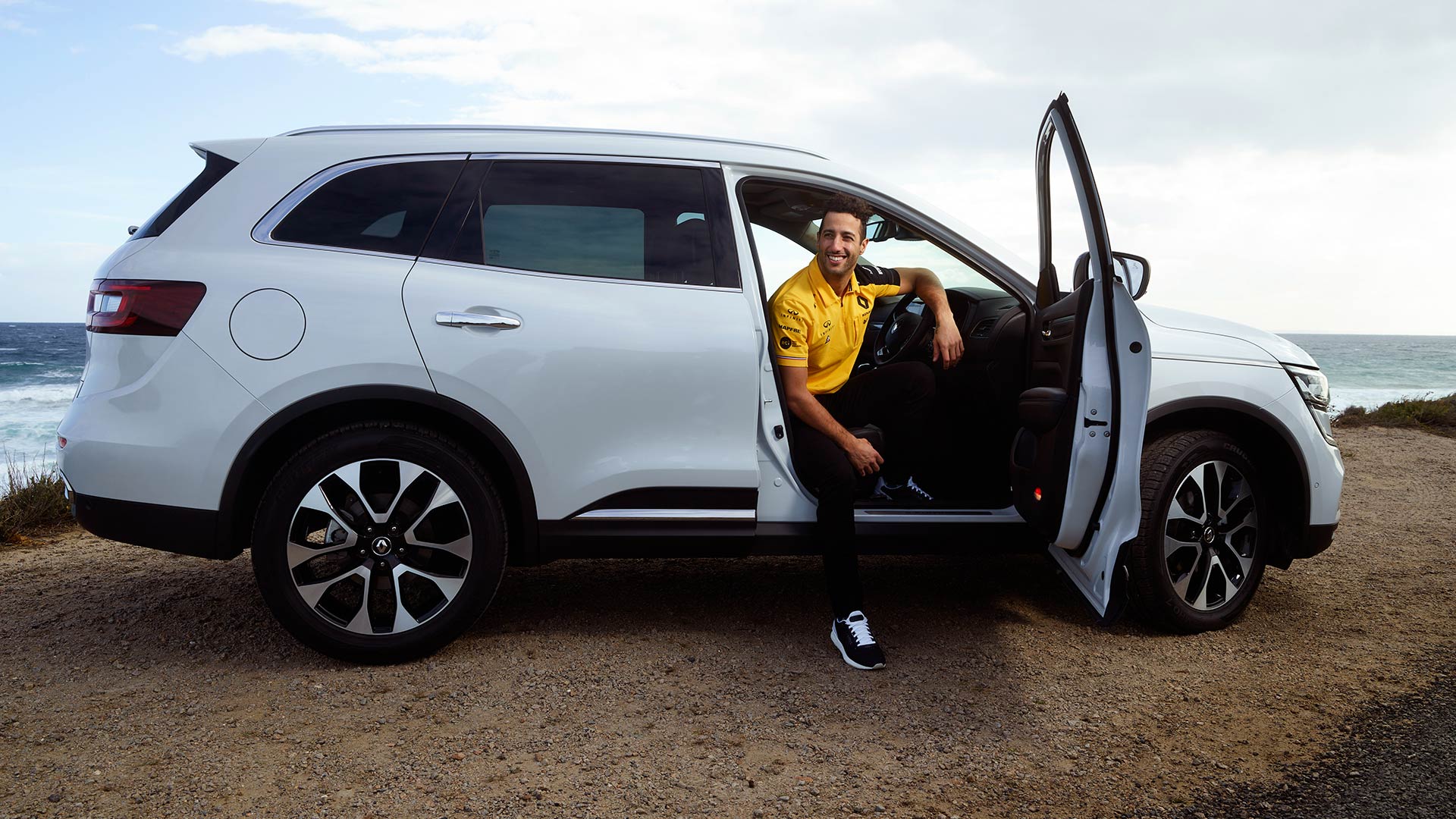
Daniel Ricciardo gets his own special Koleos SUV
© RenaultFormula 1 fans were shocked when Daniel Ricciardo abandoned Red Bull Racing for Renault at the end of the 2018 season. However, the move opened up possibilities for Renault to market F1-inspired products in Ricciardo’s Australian homeland.
Available only in Australia, the Koleos Formula Edition added 19-inch wheels, special side steps, and unique badging to the 400 examples. Ricciardo has been denied any Espace F1-style performance in this SUV though. A 2.5-litre gasoline engine offers more sedate performance with 169 hp.
Perhaps this new company car helped persuade him to move teams, again, to McLaren.
-
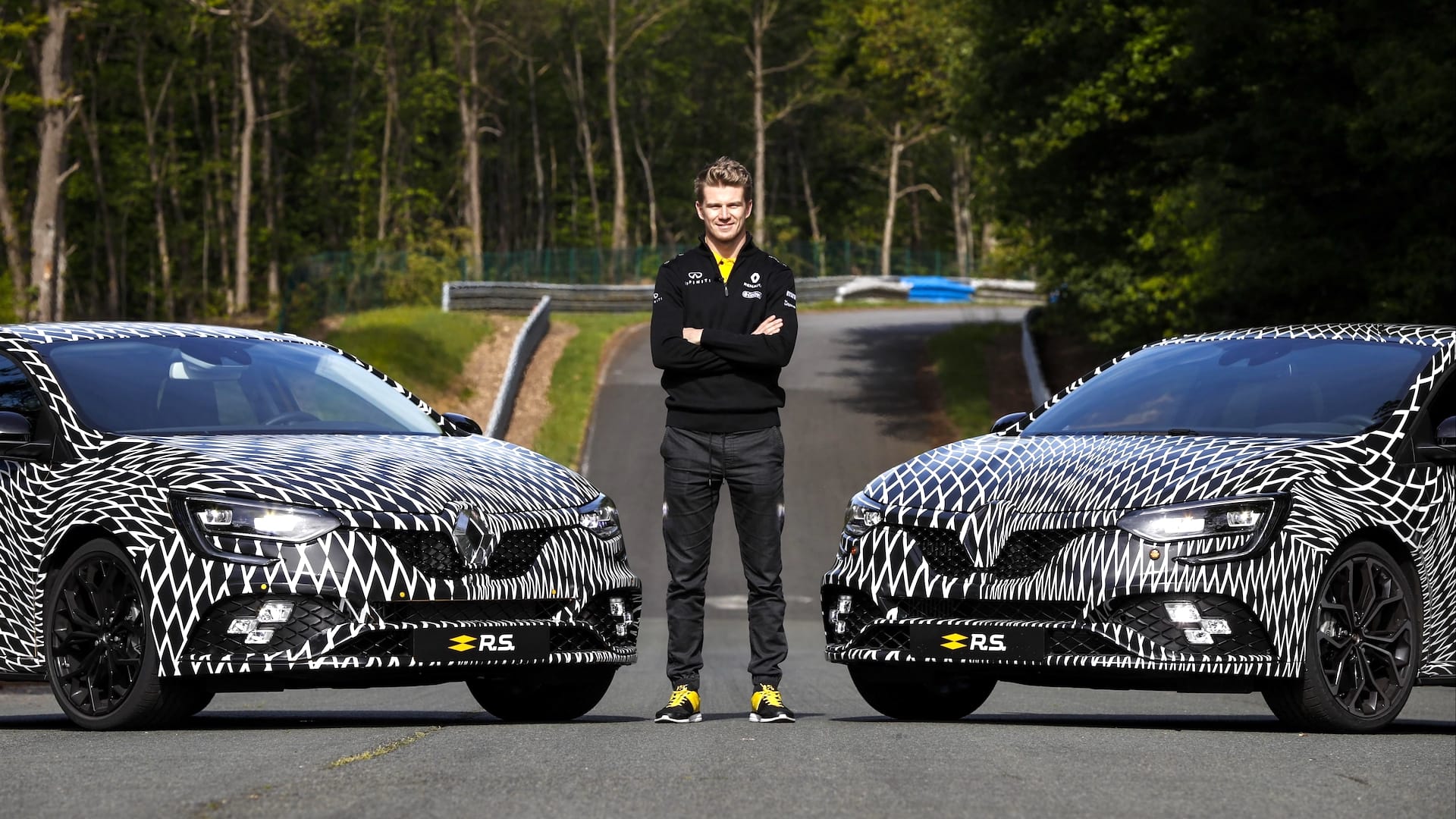
Nico Hulkenberg tests the Renault Megane R.S.
© RenaultNow a reserve driver for Aston Martin, Nico Hulkenberg currently holds the record for the most Formula 1 starts without taking a podium. During his time with Renault, he also got involved with development for the 2018 Renault Sport Megane.
Before the launch of the new hot hatchback, Renault lapped the Monaco Grand Prix circuit with a disguised version. Hulkenberg was the driver picked to show off the new Megane, fitting in some extra laps before the race.
-
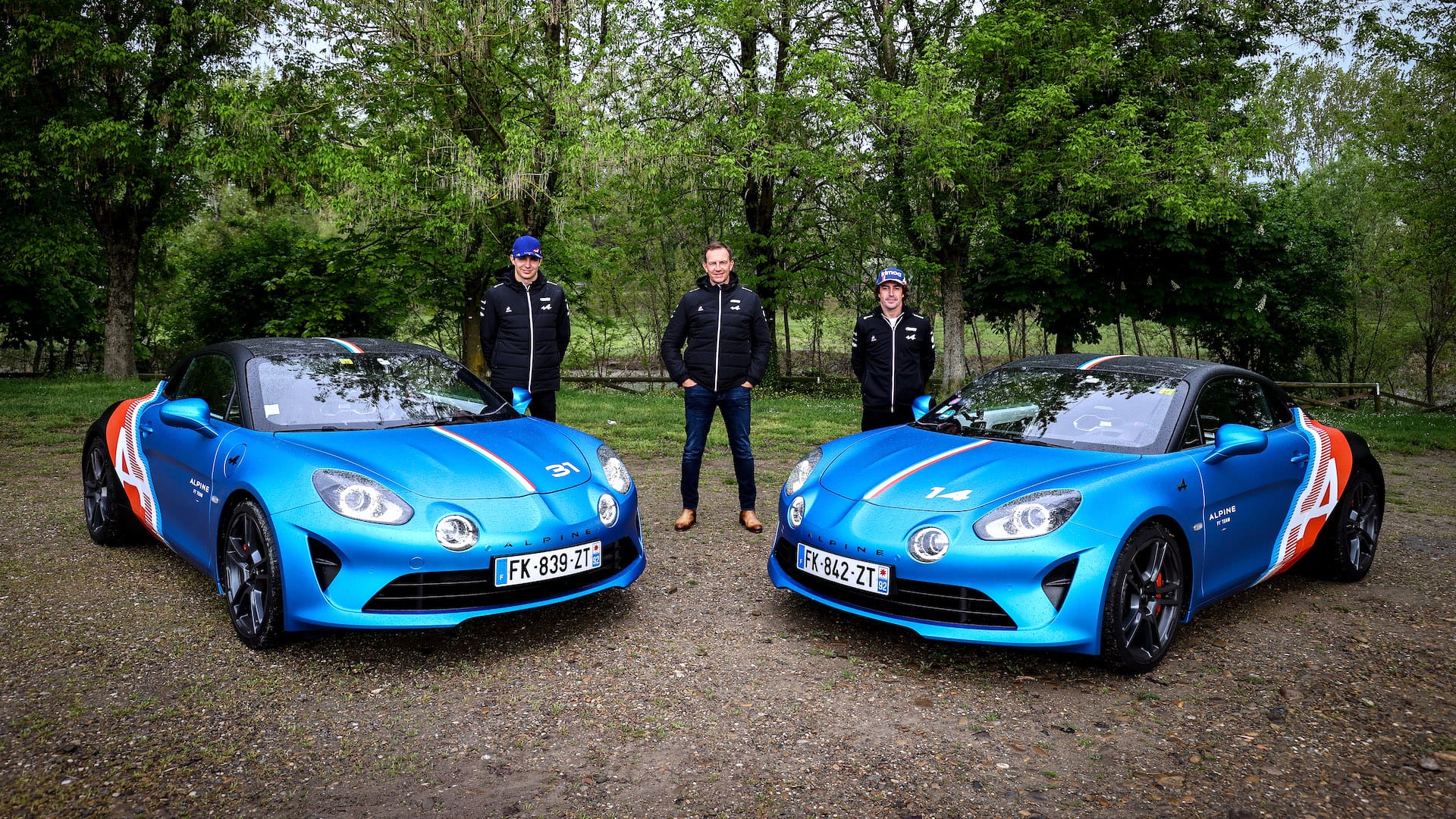
Alpine creates special road cars for Alonso and Ocon
© AlpineThe Renault Formula 1 team was rebranded as Alpine for the 2021 season, helping to promote the company’s sports car brand.
For the 2021 Emilia Romagna Grand Prix at Imola, drivers Fernando Alonso and Esteban Ocon were presented with special versions of the Alpine A110. Designed to resemble the livery seen on Alpine’s F1 racers, the cars were used by Alonso and Ocon to commute to the circuit.
-
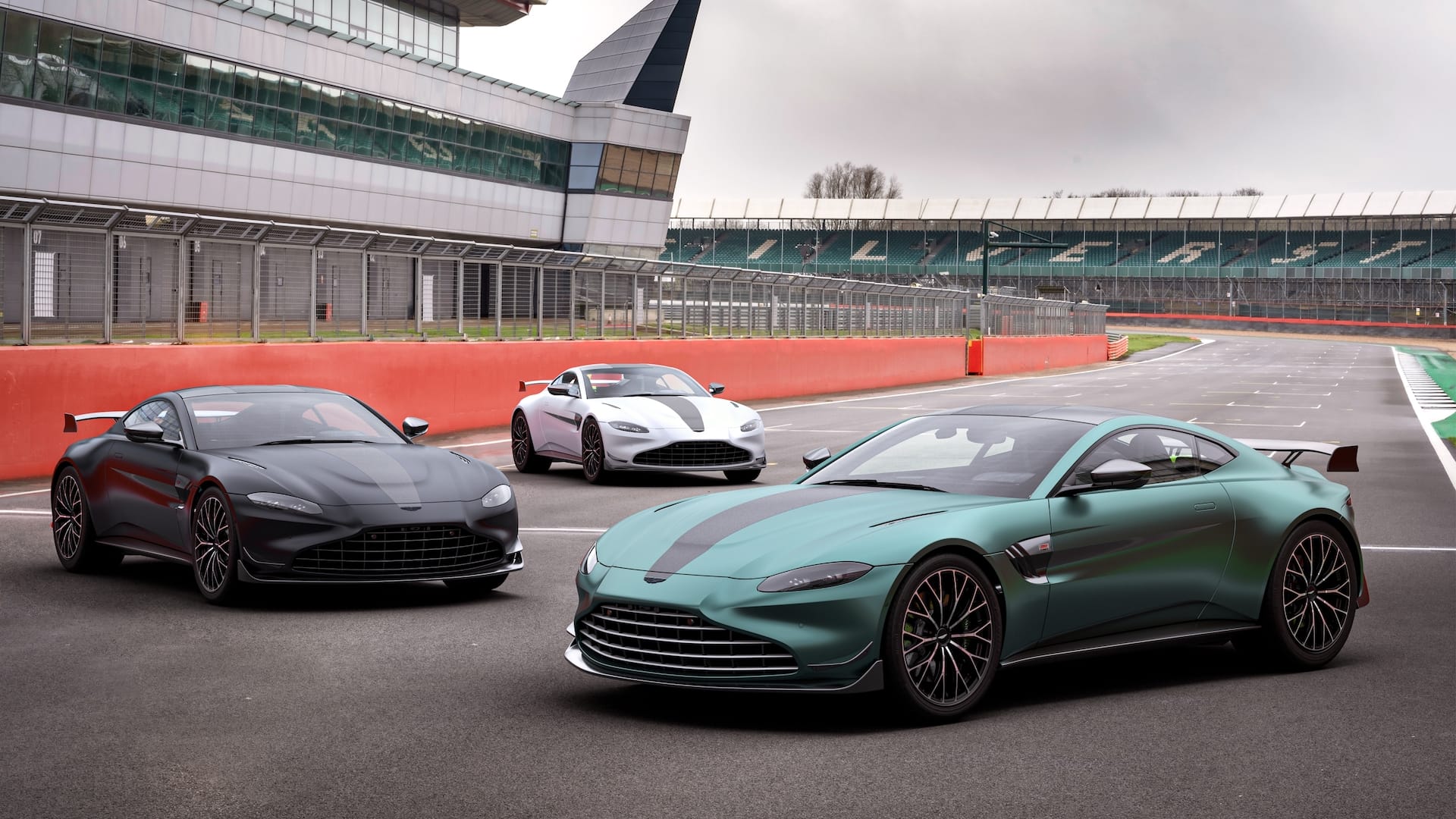
Aston Martin Vantage F1 Edition
© Aston MartinInspired by the use of the Vantage as a Formula 1 safety car, Aston Martin created a special edition version for the road.
The Vantage F1 Edition boasts more power than the regular car, with a total of 528hp on offer. New 21-inch wheels, a fixed rear spoiler and bespoke graphics helped mark out the flagship Vantage.
-
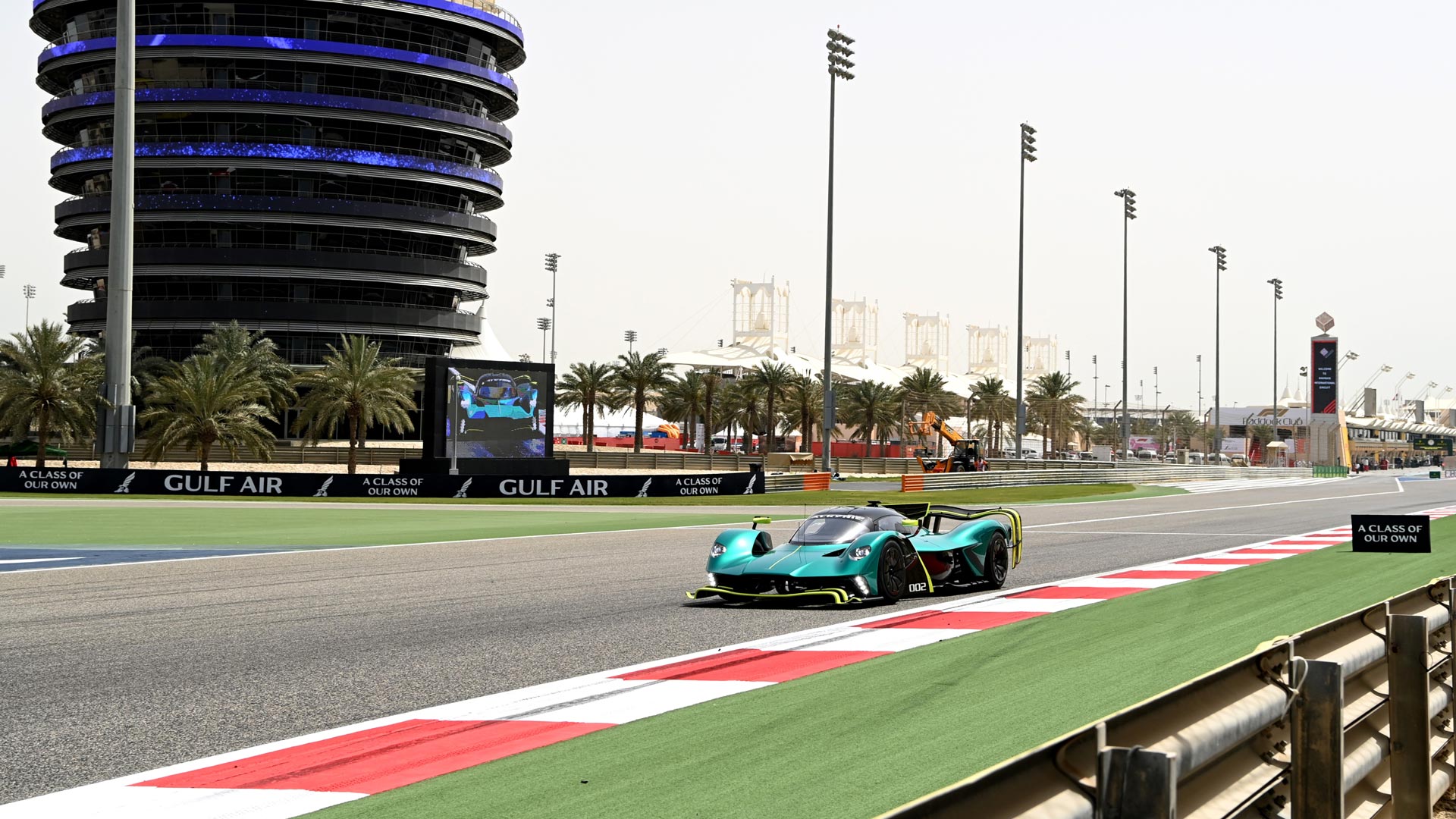
Aston Martin Valkyrie AMR Pro
© Aston MartinAston Martin first used the 2022 Bahrain Grand Prix as an opportunity to show fans exactly what the Valkyrie AMR Pro can do on-track. It marked the hypercar’s first public moving debut, performing hot laps ahead of Saturday’s qualifying session.
Development driver Dirk Müeller described the 1,000hp machine as being “closer to an F1 car in terms of performance than anything else I have ever driven. The power, the handling, the grip, everything is perfect.”
Buyers of the 40 AMR Pros will get the chance to drive them on circuits used by Formula 1.
-
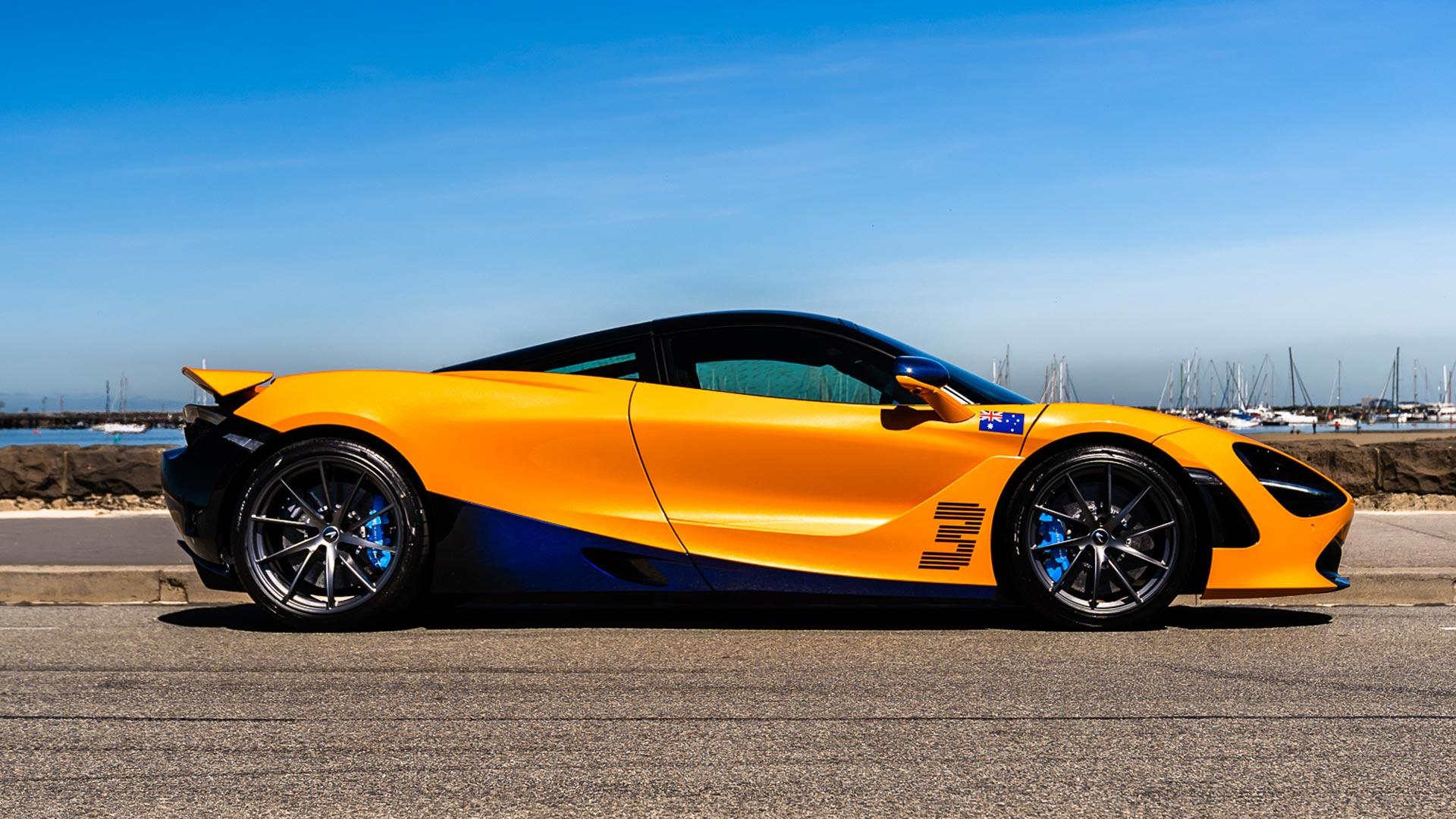
McLaren Daniel Ricciardo Edition 720S by MSO
© McLarenPerhaps to make up for his slightly underwhelming Koleos SUV at Renault, another team change brought Daniel Ricciardo a better company road car.
Announced at the end of 2021, the Daniel Ricciardo Edition 720S uses the same Papaya Orange and Burton Blue colour scheme as seen on McLaren’s 2021 F1 cars.
Just three examples were offered, all to Australian customers, with each wearing a special commemorative plaque.
-
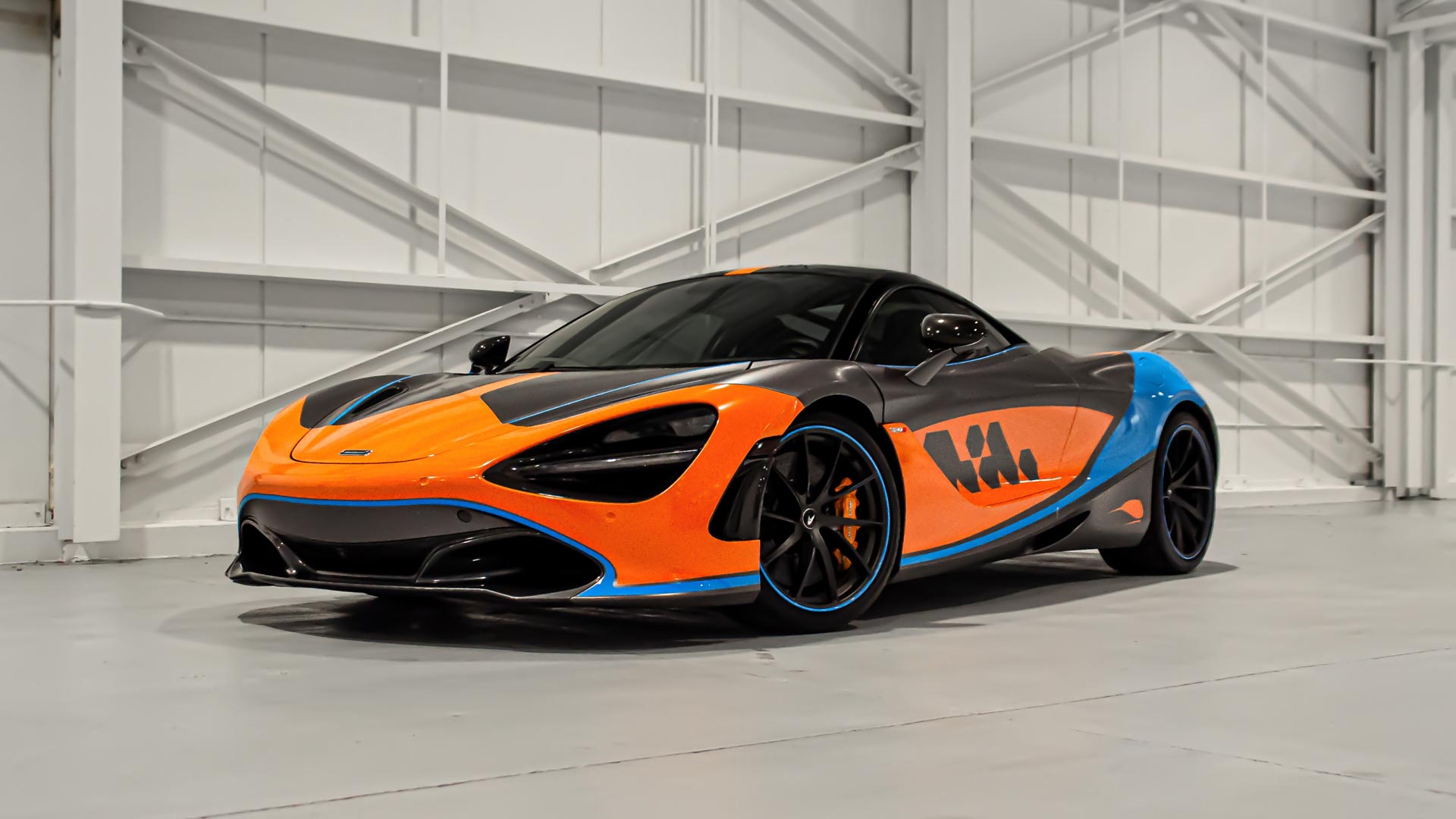
McLaren Racing Livery 720S
© McLarenMcLaren was clearly in a mood to celebrate the Miami Grand Prix, having created five special versions of the 720S supercar.
The cars hit the streets of Miami as part of Formula 1’s Pirelli Hot Laps event, and were also displayed in the McLaren hospitality area.
A special livery wrap pays tribute to all three McLaren Racing teams – Formula 1, Extreme E and IndyCar. Bright Fluro Papaya contrasts with new blue accents, meaning it stood out even in Miami.
-
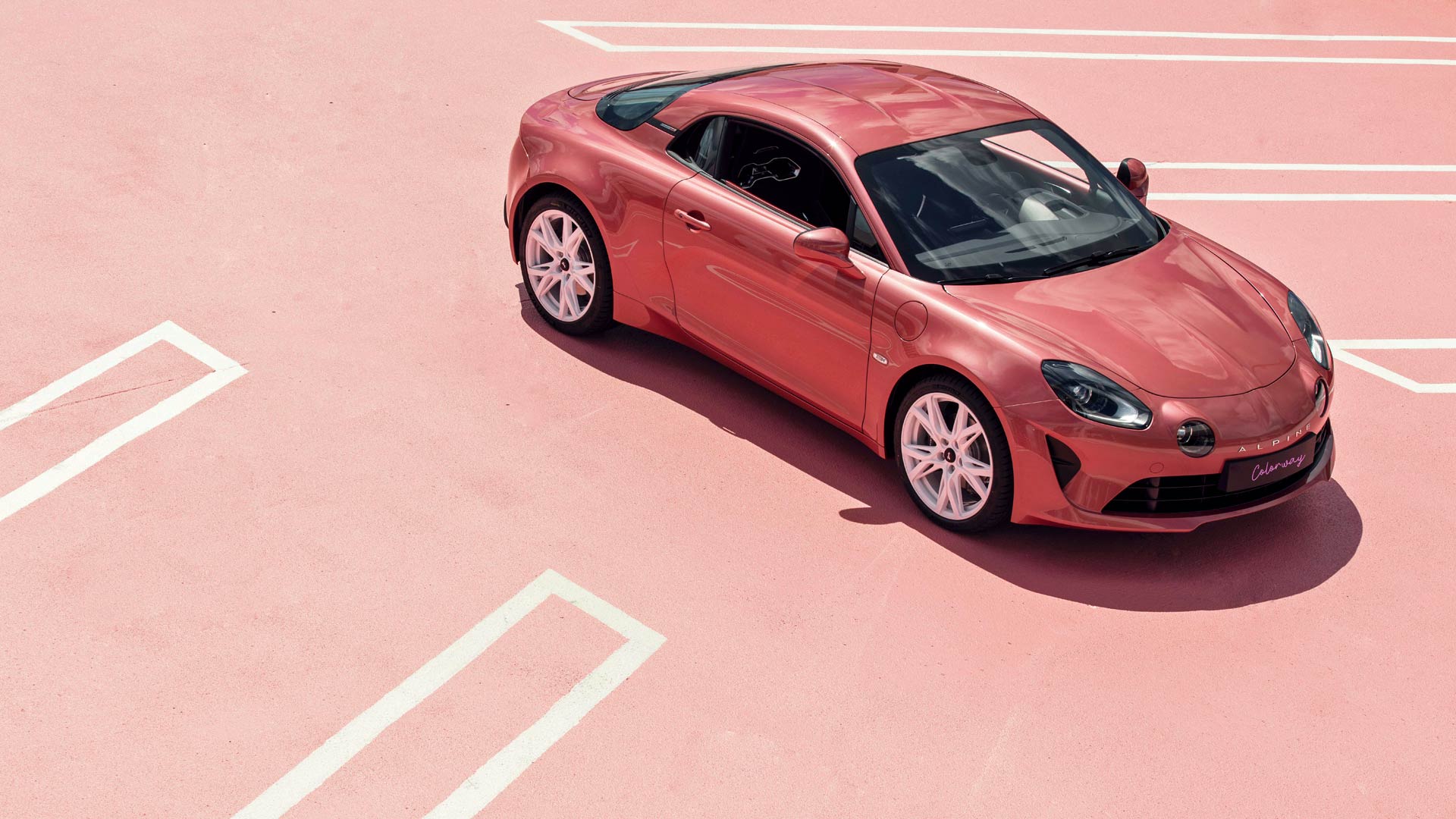
Alpine A110 South Beach Colourway
© AlpineMiami fever seemingly struck Alpine as well, with the French brand releasing a special edition of the A110 sports car.
To commemorate the inaugural Miami GP, Alpine created the South Beach Colourway Pack as an option. Buyers can pick from Bleu Azur and Rose Bruyère paint finishes, said to have been inspired by Miami’s neon lights, art deco buildings, and colourful sunsets.
Also new are 18-inch Serac wheels in white, with the interior featuring colour-matched trim and special floor mats.
-
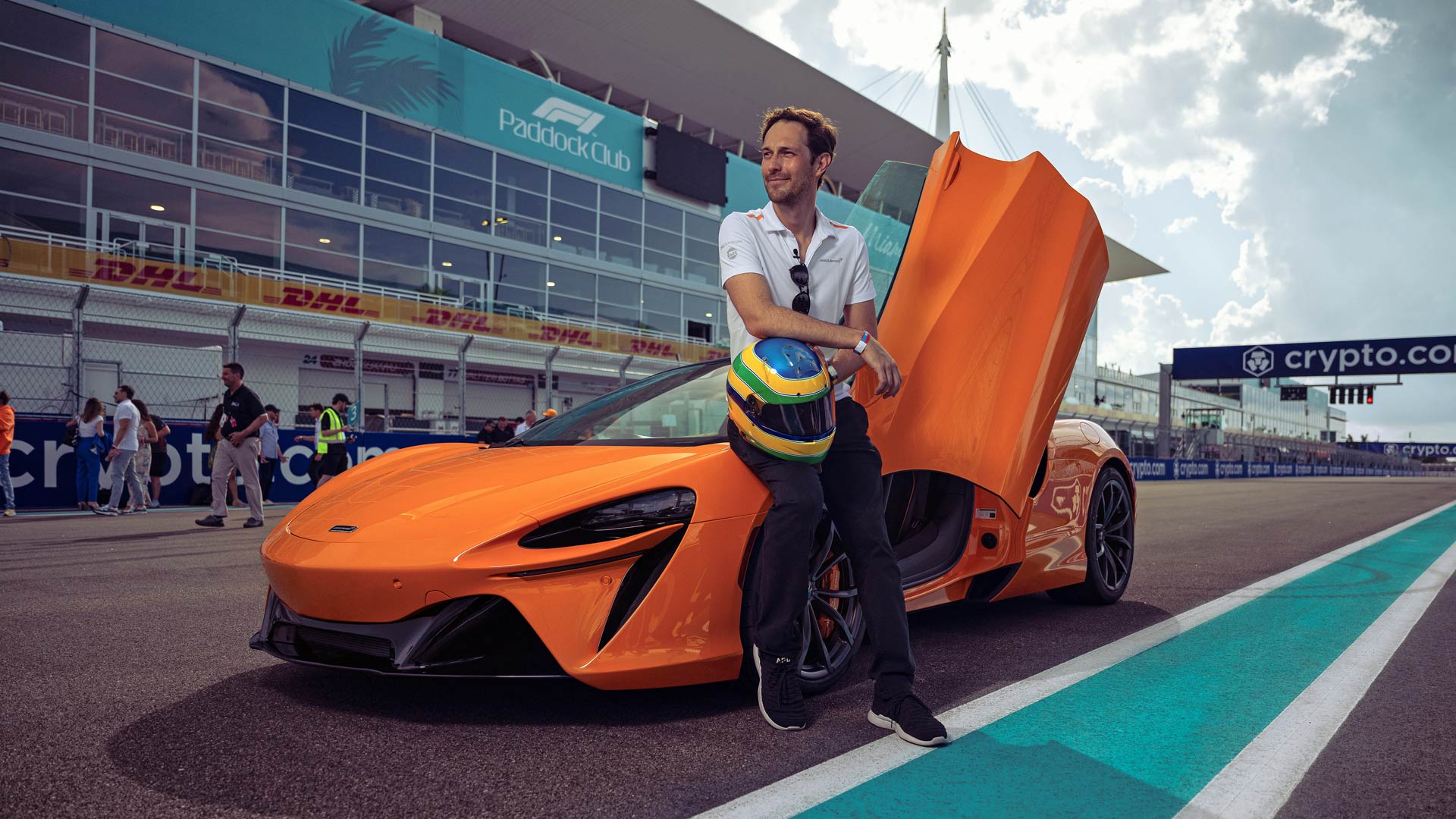
Bruno Senna laps Miami GP circuit in McLaren Artura
© McLarenWhen it comes to Formula 1, the names McLaren and Senna are intrinsically linked. The late Ayrton Senna took five victories in various F1 races in the United States, including the 1991 Phoenix Grand Prix.
It meant when it came to taking the all-new McLaren Artura hybrid o- track in Miami, there was only one driver to ask. Bruno Senna, Ayrton’s nephew and former F1 driver in his own right, became one of the first to drive the new Miami circuit.
The Artura combines a 3.0-litre twin-turbocharged V6 engine with an electric motor, offering a total output of 671 hp. A top speed of 205 mph makes it perfectly suited to the Miami track.
-
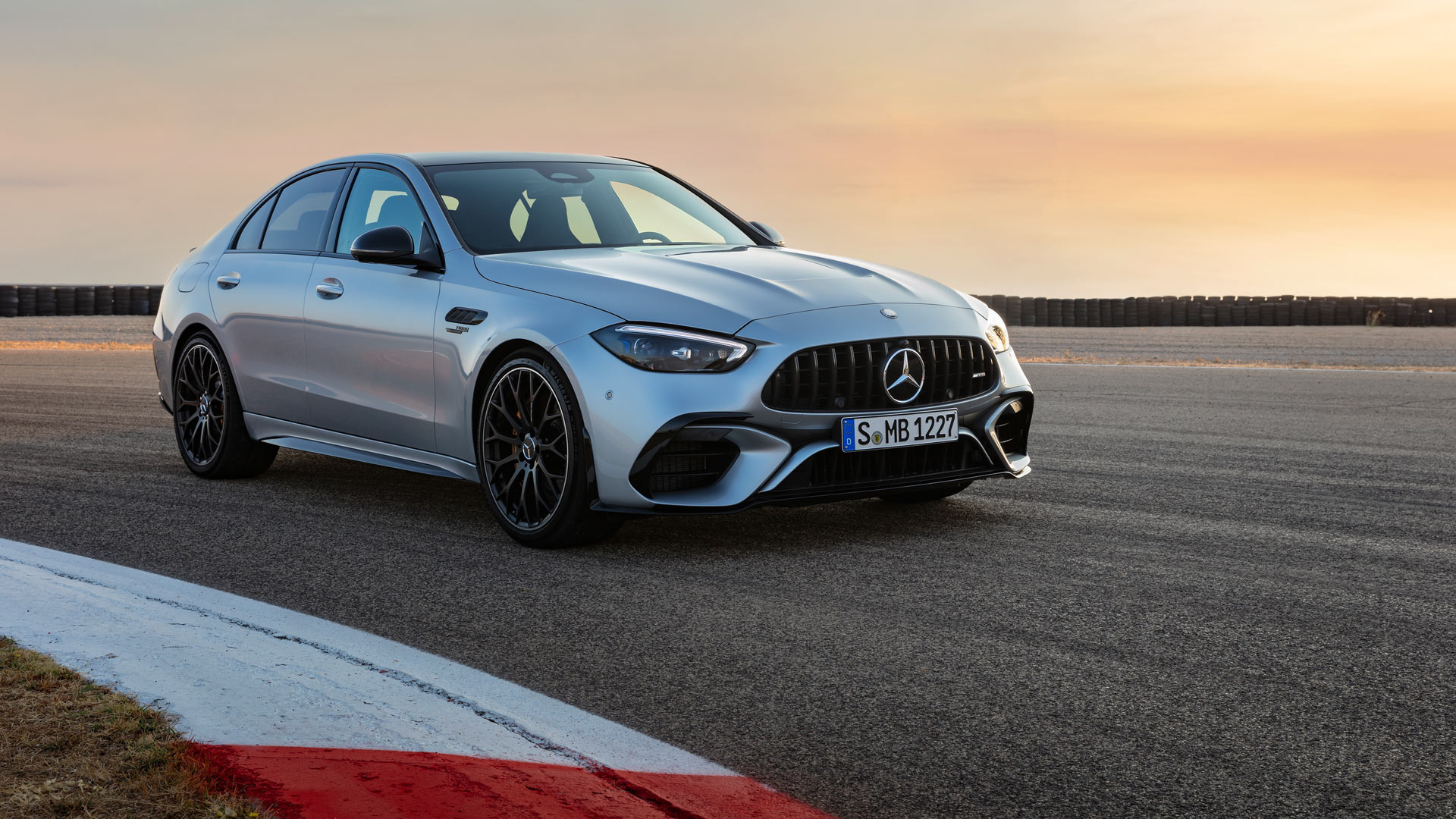
Mercedes C63 S AMG E Performance
© Mercedes-BenzAfter several years of dominating Formula 1’s hybrid era, Mercedes-Benz is trickling down the elaborate engine technology to the rest of its range. This includes the latest C63 S AMG E Performance models, which have gained a new powertrain.
Instead of a traditional V6 or V8, the new C63 S AMG E features a turbocharged 2.0-litre four-cylinder engine, which is teamed with a 204 hp electric motor. The result is a total of 680 hp, making this the world’s most powerful production four-cylinder engine.
Like a Formula 1 car, the turbocharger is also driven by an electric motor to eliminate lag. A high-performance 400-volt battery system has been developed by AMG, using lessons learned from the company’s F1 efforts.
-
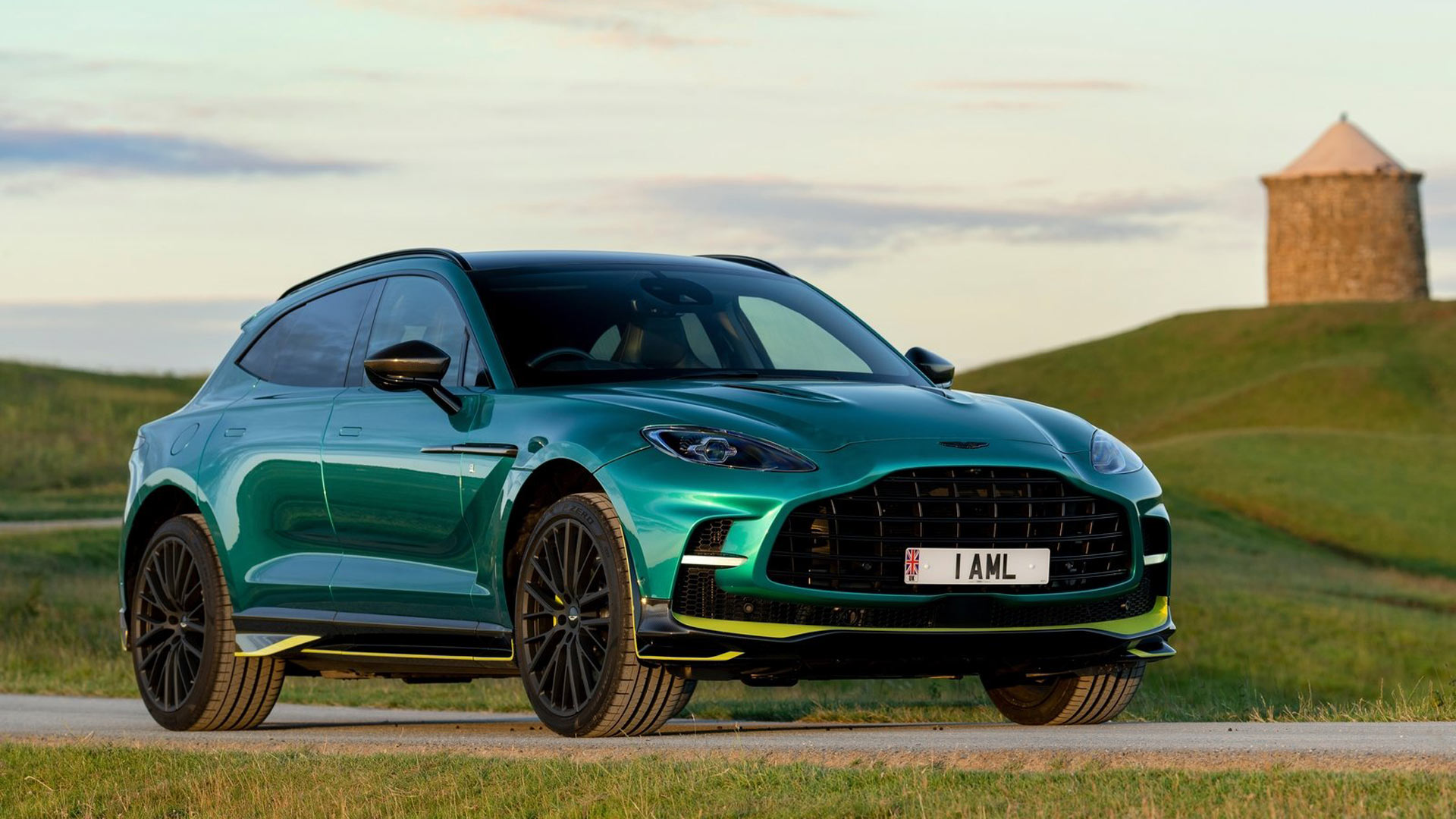
Aston Martin DBX707 Q F1 Green
© Aston MartinThe Aston Martin DBX707 might not seem the most obvious link between the company’s road cars and its F1 team. However, with 707 hp, it is still one of the world’s fastest and most powerful luxury SUVs.
To ensure it had a suitable motorsport theme, Aston Martin’s bespoke Q division gave the DBX707 a special paint job: 2022 Aston Martin Racing Green, as used on the F1 cars, matched with bold lime detailing.
More contrasting lime green can be found inside, both on the seats and driving mode selection dial.
-
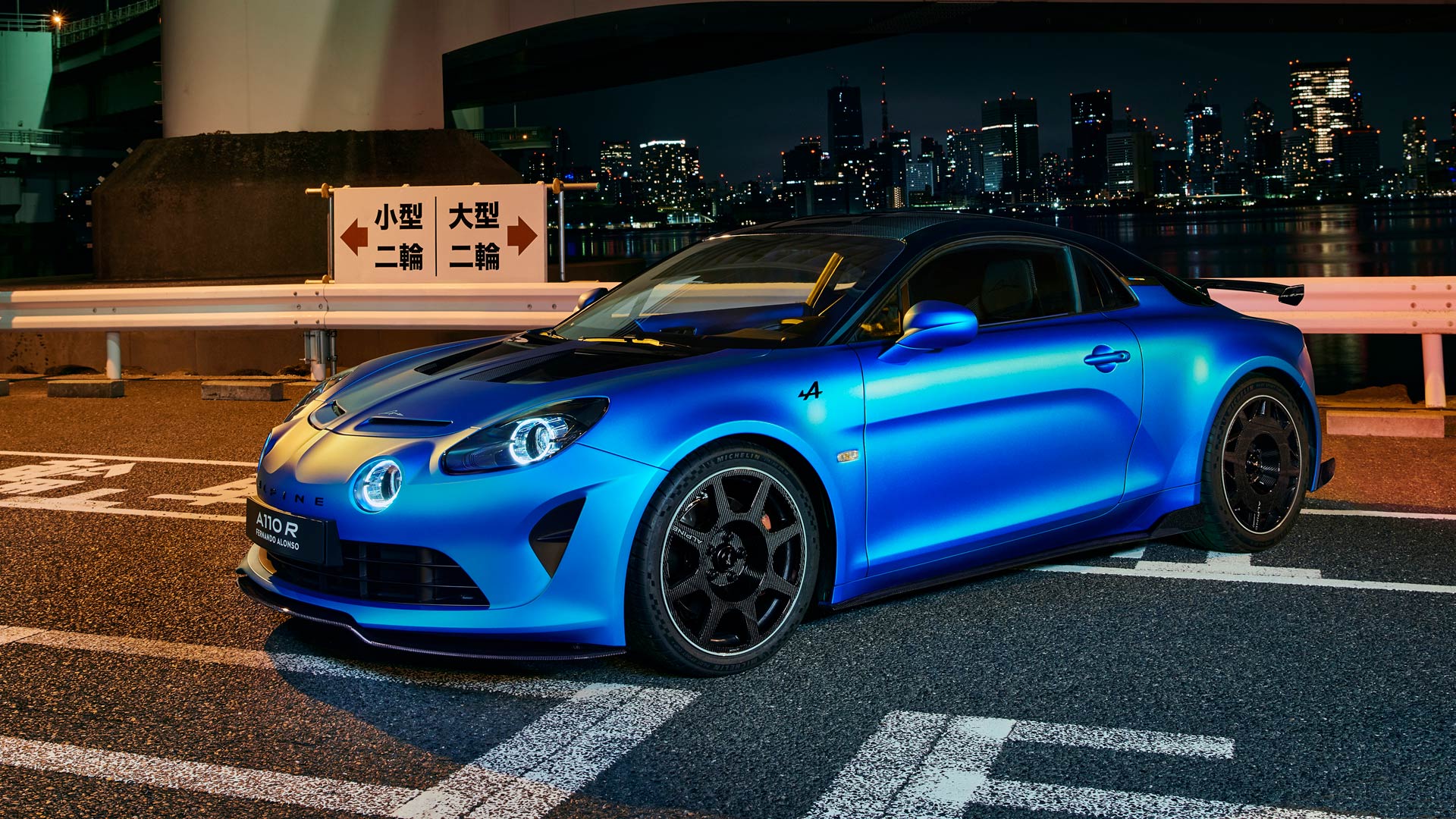
Alpine A110 R Fernando Alonso
© AlpineFernando Alonso’s company car for 2023 is likely to be a DBX707, as the Spanish driver has changed teams for the new season. However, Alpine has chosen to celebrate his time there with an ultra-limited edition of the A110 R coupe.
The two-time F1 World Champion has helped develop a setup for the A110 R’s adjustable suspension, testing it on the Catalunya race track. A blue, orange and yellow flag on the rear quarter windows is in the driver’s trademark colours, while the orange brake calipers are also a nod to Alonso’s past liveries.
Inside, the sun visor has a favourite Alonso quote: “There is more than one path to the top of the mountain” laser-cut into it. Buyers of the 32 cars will also receive a replica racing helmet signed by Alonso himself.
-
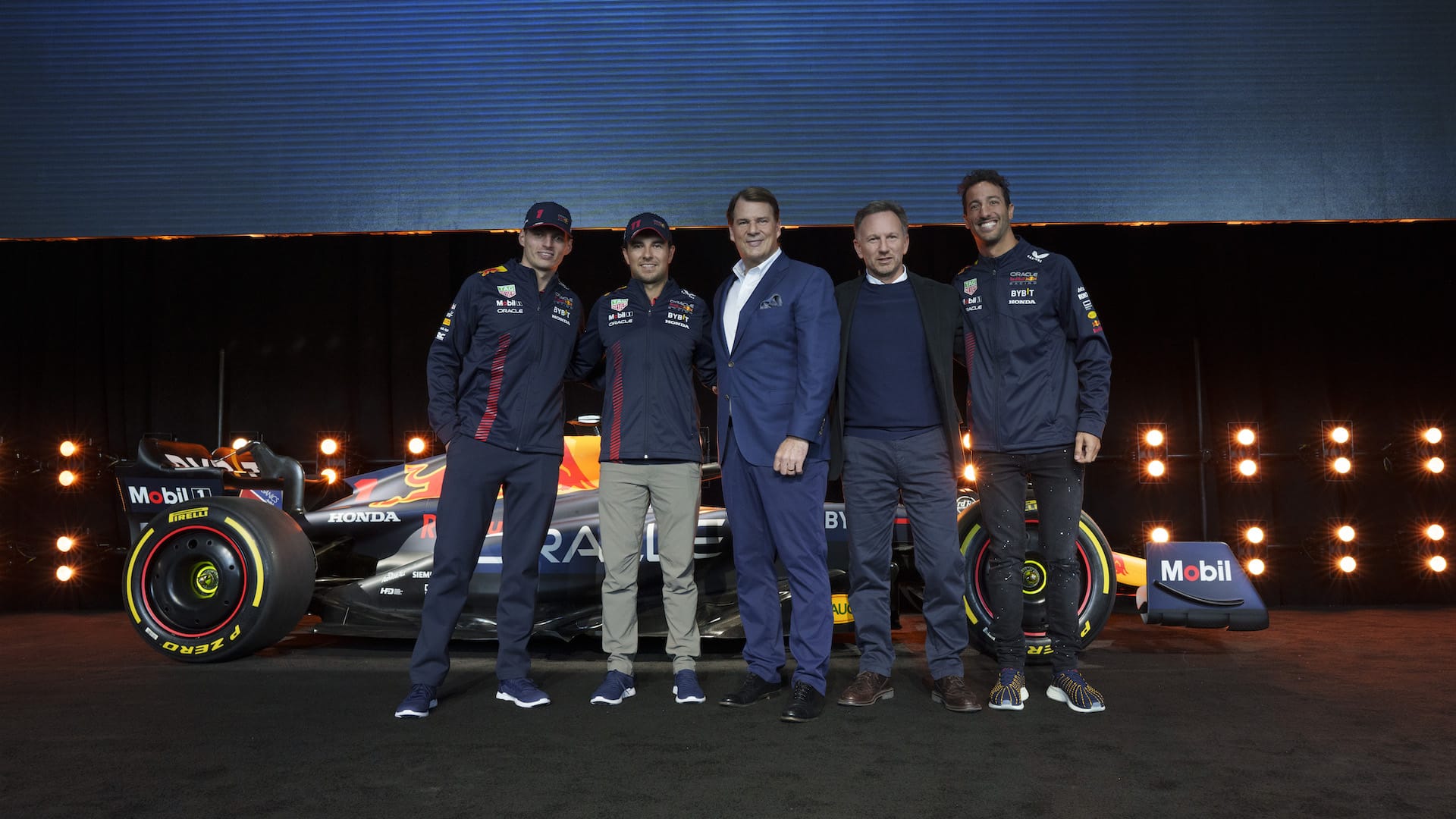
Ford to power Red Bull Racing from 2026
© FordThis year, Ford surprised fans with an announcement that it would return to Formula 1, some two decades after leaving the sport. As part of the 2023 Red Bull Racing launch event in New York City, Ford’s collaboration with the championship-winning team was revealed.
From the 2026 season onwards, Ford will work with Red Bull Powertrains to create the next-generation hybrid power unit for use in Formula 1. This will include a new combustion engine designed to run on sustainable fuels, along with a 350 kW electric motor.
Both Red Bull Racing, and sister team Scuderia Alpha Tauri, will use Ford powertrains.
-
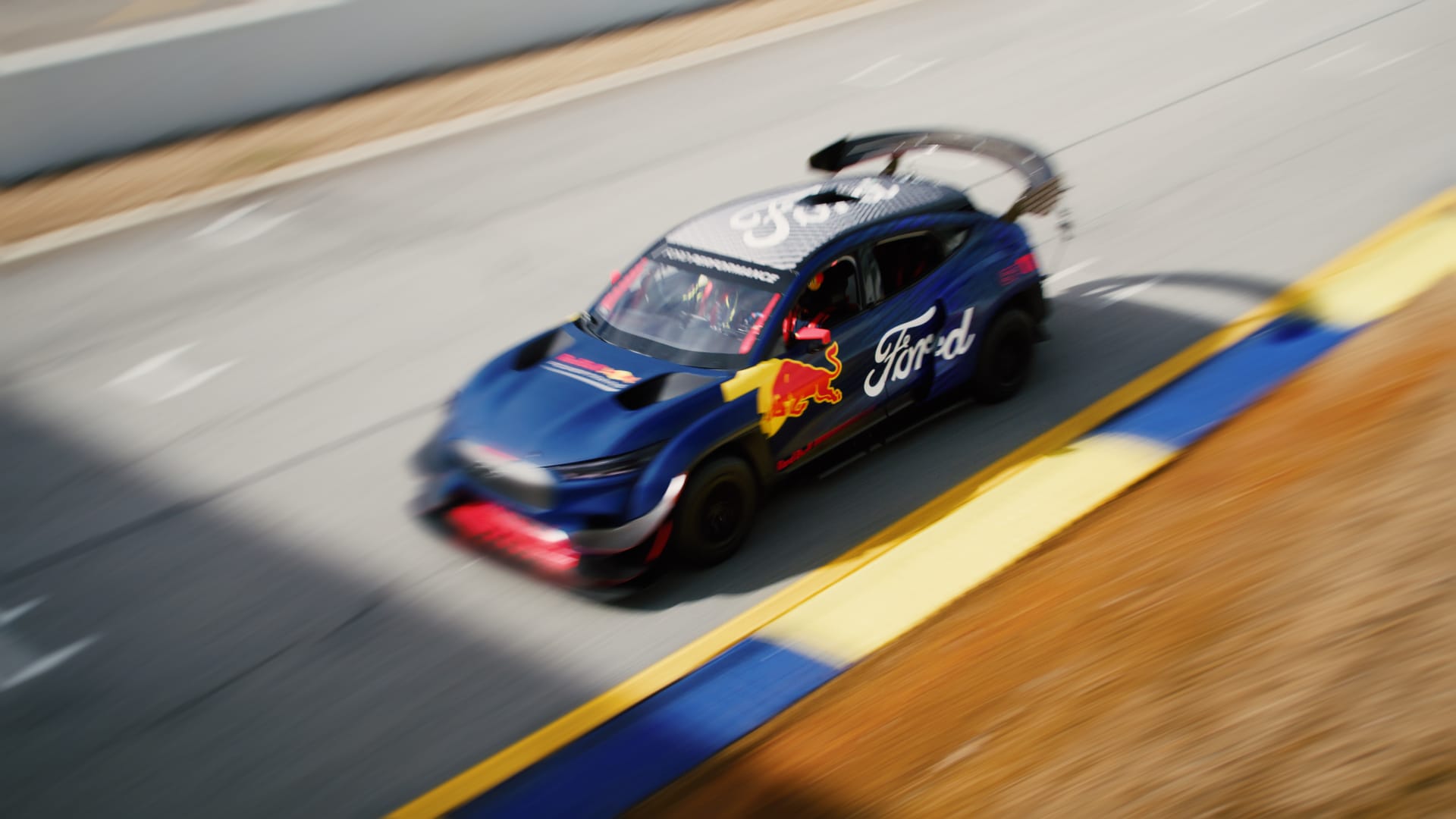
Building an electric future
© Ford“Ford’s return to Formula 1 with Red Bull Racing is all about where we are going as a company – increasingly electric, software-defined, modern vehicles and experiences,” explained Jim Farley, President and CEO of Ford Motor Company. “F1 will be an incredibly cost-effective platform to innovate, share ideas and technologies, and engage with tens of millions of new customers.”
Ford previously had a lengthy association with Formula 1, having first entered the sport in 1967. It remained active until 2004, when it sold the Ford-owned Jaguar team to Red Bull.
As part of the big reveal, Ford let Red Bull Racing drivers Max Verstappen and Sergio Perez loose on-track in the Ford Mustang Mach-E 1400 and SuperVan 4.